#canary islanders of louisiana
Text
LA PRENSA COLONIZADORA
Otra de los ADN de los descendientes de los aborígenes canarios, no lo había leído antes. @beautiful-basque-country
Un estudio genético descubre que vascos y bereberes tienen un origen similar...
Los españoles son más parecidos a los norteafricanos que a los europeos.
MALEN RUIZ DE ELVIRA
Madrid -24 NOV 1995 - 00:00 CET
El análisis genético comparativo de las poblaciones vascas, el resto de España, Cerdeña y Argelia ha llevado a la conclusión de que los genes de las poblaciones ibéricas iniciales predominan en los vascos, que en parte escaparon a las posteriores invasiones celtas, romanas y árabes. Entre sus antepasados, según los genes HLA estudiados por científicos españoles, predominarían los blancos norteafricanos de hace más de 10.000 años, de los que descienden los bereberes actuales. El resto de los íberos se mezclaron más con los invasores, especialmente celtas y árabes.
Mediante el estudio de la frecuencia de los genes HLA, se puede elaborar el árbol de relaciones de las poblaciones humanas a lo largo de la historia. Esto es lo que han hecho los investigadores liderados por Antonio Arnaiz, profesor de la Universidad Complutense, con vascos de San Sebastián, españoles de Madrid y argelinos de Argel. Estudios similares se están llevando a cabo en la población marroquí. Los HLA son genes altamente variables que se utilizan para identificar individuos en estudios de paternidad y poblaciones en estudios antropológicos y para seleccionar pares donante-receptor en trasplantes. En estudios anteriores se había encontrado que los vascos, sardos y el resto de los españoles están más cerca en el árbol de parentesco de las poblaciones africanas que del resto de las poblaciones europeas.
a través del estrecho
El estudio de los genes HLA en una población de Argel, el primero que se hace en este detalle, señala Arnaiz, muestra que los argelinos tienen un gran componente de genes de la población blanca paleonorteafricana (los bereberes actuales), que ocuparon el territorio del norte de África antes de las invasiones árabes del siglo 7. El parentesco genético de los argelinos resulta así muy cercano con la población española en general, con los vascos y también con los sardos, otra población que ha permanecido relativamente aislada, debido a su insularidad. Esto demostraría que los íberos poblaron en algunos tiempos preneolíticos en el norte de África o que los colonos blancos del norte de África cruzaron el Estrecho de Gibraltar hacia la Península Ibérica. Esto último sería más probable,
El origen genético común de vascos y argelinos coincide con las similitudes encontradas por algunos lingüistas entre las lenguas vasca y bereber, habladas por los miembros de esta etnia que actualmente viven en el norte de África.
Estos resultados han sido presentados en la conferencia sobre el Genoma Humano Europeo, celebrada los días 9 y 10 de noviembre en Barcelona, donde fueron corroborados, según Arnaiz, por otros dos trabajos, uno de ellos sobre el cromosoma Y de sardos y vascos, y otro con referencia a los argelinos. Los trabajos han sido publicados en revistas científicas, las últimas en Human Immunolog y Tissue Antigens, este año.
Para la muestra de vascos españoles se han tomado 82 personas de San Sebastián con apellidos vascos característicos de las últimas tres generaciones. Para el resto de españoles se han tomado 176 madrileños, considerados como una muestra representativa de la población española en general dada la gran inmigración que se ha producido desde el inicio de la revolución industrial.
Aislamiento genético y cultural
En el caso de los argelinos, se ha basado en el estudio del ADN de 106 ciudadanos de Argel que no habían recibido genes europeos durante al menos tres generaciones. Los estudios han sido financiados en parte por el Fondo de Investigaciones Sanitarias. Según los estudios, los vascos representarían un aislamiento genético y cultural relativo de las poblaciones ibéricas iniciales. McEvedy y Jones, en su Atlas de Poblaciones, recuerda Arnaiz, parten del hecho de que los antiguos habitantes de la Península Ibérica recibieron una mezcla significativa de genes de los celtas de Europa Central (50% de los nuevos genes) durante el primer milenio antes de Cristo. Entonces las aportaciones de otros invasores fueron más comerciales y culturales que genéticas, con la excepción de la de los árabes, que en número de unos 30.000 (entre ellos muchos bereberes) se mezclaron con los aproximadamente cuatro millones de habitantes de la Península Ibérica en el siglo VIII.
Original
Canary Islanders of Louisiana
Dylan Claire Rogér Hidalgo
He traducido un artículo de un boletín español que habla de algunos de nuestros ascendencia norteafricana (Todos los vascos, canarios y guanches tienen orígenes separados allí. )
https://www.facebook.com/groups/52179063441/?multi_permalinks=10161267462813442&hoisted_section_header_type=recently_seen&__cft__[0]=AZWTqjrgcB5oL3o4WR9D1MPnfN6roXJ9DZGTfIJIcVGEyQK8su7GeQGD9y1vDBuJkpLxUsVQOalCUjxTx43xoD9kgwa-OZOZSge0BKB3h5Etdoi2vC-TFcdkppsioN8NrbjgNY6sjoN_ssT_3CajUwEGugKG71hw2aTQHwSxtr7h64rg8ons-DiDzUQFBEO8K1M&__tn__=%2CO%2CP-R
URL original👇👇👇👇👇
https://lm.facebook.com/l.php?u=https%3A%2F%2Fdocs.google.com%2Fdocument%2Fd%2F19VuomaqP__mYNjHovxmJB3lPlubVVUK_w0t_PiX7chg%2Fedit&h=AT3gdDOoUnPCr77e99eUAcPFrHvu6VUtuNMOlogyYGxRMhwR0rR7naery7zODVOrhqR8o9MpbgpXZ94QiUb3f5sLFk_3W1R2SbNbzVb0F_73V1r_y_Gy3-E4WxhhhTs5OcUIVKpCzJMEulb0KJ56&__tn__=%2CmH-R&c[0]=AT3vgHZG8p7zWu8xf3dwgXIxS1_q7Do6a526peaubzZKP2Wr7M3z7zAV0PwddC8VeAFMXmN6zU5vNvTBXxaP6V7m5NuXSPUAptKdGVzJG7xj8OnO5VX_a5lPNmY47Xca73gY1KjqEDtWxmHfLnmTaSHzDAvqWrupcGdwd8L3RA143Ii4YxjAD9N1DPjK4Z-isyuP86lpk-CtQos7-xZF63vTSmhZAPs2SwZZk9AoDIS4TF8
#canary islanders of louisiana#adn#vascos#canarios#guanches#colonialism#aborigenous#indigenous#culture#history#genocide#native#unesco#united nations#international criminal court#cou penal international#corte penal internacional#colonialismo#aborigenes#indigenas#historia#cultura#genocidio#nativos#naciones unidas#canarias la colonia mas antigua del mundo#canarias tiene identidad cultural propia#descolonizacion de canarias#canarias#islas canarias
24 notes
·
View notes
Text
The Canary Islanders of San Antonio
The Canary Islands are located off the coast of Spain and are considered Spanish territory. King Philip V of Spain sent multiple families from the Canary Islands, also known as the “Isleños,” to claim territory under Spain in North America in the 18th century. The Spanish government wanted to claim land before the French started to expand there. These families settled in Florida, Louisiana, and Texas, but this text will specifically discuss the Canary Islanders that immigrated to San Antonio.

The Isleños settled in a village on the banks of the San Antonio River (The Institute of Texan Cultures, 2019). Upon their arrival, the families were given new supplies and were housed until they could build their own homes and also begin to farm. All that was in the village was Presidio San Antonio de Béxar and the Mission San Antonio de Valero, which is now considered the Alamo (The Institute of Texan Cultures, 2019). The Presidio San Antonio de Béxar housed the Spanish soldiers and the families who were settlers, and the Mission was inhabited by the local Native Americans and Franciscan Friars, which is a group that takes orders from the Catholic Church, and the friars were ordered to convert the American Indians into Christianity (The Institute of Texan Cultures, 2019). The history of the Catholics converting the American Indians and forcing them to assimilate into European culture was pretty common across the states.
The Canary Islanders also organized a community called La Villa de San Fernando which was considered the Spanish capital of Texas (The Institute of Texan Cultures, 2019). There, they also initiated the first municipal government in Texas (The Institute of Texan Cultures, 2019). Furthermore, the settlers became mayors, sheriffs, and judges of this new community in order to enforce Spanish law (The Institute of Texan Cultures, 2019). So, the Canary Islanders heavily influenced the way Texas does local government and also contributed in establishing the city of San Antonio.
The Canary Islanders spoke a dialect of Spanish that was influenced by the Guanche language which was spoken by the indigenous people of the Canary Islands. Additionally, the Canary Islanders heavily influenced the Bexar area with their culture and their ranching and farming practices. When the Isleños came to San Antonio, they brought many tools and livestock that would help them bring their agricultural practices. However, they couldn’t start farming and ranching immediately. They had to divide the land and had to build temporary homes called jacals houses (The Institute of Texan Cultures, 2019). From there, they started to sow their fields using oxen with cotton, corn, beans, fruit, and barley (The Institute of Texan Cultures, 2019). Once the Islanders established their agricultural applications, they turned their focus on constructing the village.


I could find much information about the San Antonio Canary Islanders treatment towards the Native Americans. I believe that I could not find this information because I think that the Canary Islanders are a niche group of people since there was only a small number of families that came to San Antonio. The only thing that I could find was that the Canary Islanders who were farmers and ranchers were attacked by the local Native Americans, and there were no details following that statement. However, I want to take this time to generally discuss Spaniards' treatment towards the Native Americans. The Canary Islanders that came were Catholic and the Spaniards had built missions to convert the Native Americans into Catholicism. The Spaniards forced the American Indians into assimilating the European culture and through that process they have faced tremendous abuse. The attempt to erase the culture and lives of the Native Americans by the settlers should be acknowledged especially because I have mentioned the Spaniards building missions.
Furthermore, a tradition that is carried out until this day is the Fiesta de la Flores, which is held every year in April. The festival celebrates the arrival of spring and features a parade, live music, and traditional Isleño food.
At this point, I think it’s fair to conclude that the Canary Islanders played an important role in the history of San Antonio, Texas. Their customs, traditions, and language have had a lasting impact on San Antonio’s culture, and they continue to be celebrated and remembered today.

I am a proud descendant of Francisco José de Arocha of La Palma of the Canary Islands. The Arocha family was one of sixteen families that settled in San Antonio, Texas. Simón de Arocha, the son of Francisco José de Arocha, and Francisco José de Arocha both served as a city clerk and a public notary (Jackson, 2022). Simón was also a judge of public land distributions, an alcalde, and the lieutenant of the local militia (Jackson, 2022). Furthermore, Simón’s son, Tomás Antonio de la Trinidad de Arocha, was a rancher, a rebel during the Mexican War of Independence, and a well known public figure of San Antonio (de la Teja, 2021). Also, Tomás was an alguacil (constable) and as an alcalde (magistrate) for San Antonio (de la Teja, 2021). He was also accused of incitement by the Spanish royal government because the San Antonio municipal council was reduced, and he was later charged with sedition (de la Teja, 2021). Also, my family informed me that one of my ancestors fought in the Battle of the Alamo fighting for Texas Independence. Unfortunately I can’t find it in any historical archives, however, my father’s cousin has documents proving that I have a family member who fought.
Also, I am not sure how valid this information is about my family, but my ancestors are responsible for the construction of the San Jose Mission in San Antonio. My grandparents had the honor of getting married there in the chapel, and apparently you need special permission to use the chapel. You also supposedly need to be related to the people who helped construct the mission in order to use the chapel. Additionally, again I do not know if this is 100% true, if someone in my family passes away, we can request the city of San Antonio to shut down a road in order to celebrate the life of the person who passed away. I just thought I would add that in there, but my father is the one who told me this. My father likes to lie to me to be funny because he knows that I am really gullible. So please take this paragraph with a grain of salt. The image below is the San Jose Mission and the chapel inside.


My ancestors were clearly very influential to the establishment and history of San Antonio. Because of their efforts, my family can qualify for the Sons of the Republic of Texas, the Daughter of the Republic of Texas, and the Canary Islands Descendents Association. Canary Islands Descendents Association was established to preserve the historical documents and promote the education of the legacy of the Canary Islanders of San Antonio (Handbook of Texas, 2018).
The Arocha family also owned land in downtown San Antonio, but the land in question now has a Macy’s built on it. The land that I have discussed had a lawsuit. The Joske Brothers were German immigrants who built a giant store on my family's land. I am not sure if my ancestors had sold the land or if it was left unclaimed territory and the Joske Brothers decided to build on the land. The lawsuit happened a century ago and my ancestors were suing for a million dollars worth of damages to the land against the Joske Brothers. The court decided that my ancestors, the Arochas, were the rightful heirs of the land. After going through Spaniard land grants, it was proven that the Arochas were the original owners of the land. The land was obviously not given back to the Arochas, but they won the lawsuit and received financial compensation for the damages of the land. Now, as I said before, there is a Macy’s there. My family and I think it’s so strange that the land the Macy’s is on used to belong to my family over a century ago. The image below is a newspaper clipping of a brief explanation of the lawsuit that took place. They also owned a cemetery located in Elmendorf, Texas which is southeast of San Antonio. I have a very interesting story about this cemetery.

When my grandfather was a child, he visited the Arocha family cemetery. Decades later my grandfather remembered this cemetery, but he had no idea where it was or how to find it. In 2002, to start the journey of finding this cemetery, my grandfather and his cousin began to look at city records in San Antonio and in Elmendorf. Eventually they found the man who owned the property. When my grandfather visited the cemetery decades later the headstones were missing and their mobile homes surrounding the cemetery. A place where my ancestors lie peacefully for eternity was destroyed. My grandfather was heartbroken by what happened to not only what was a historical artifact, but also something so sacred to my family. The pictures below show the front gate of the cemetery and one of the gravestones that was fortunately found.


There was a mobile home directly on the cemetery where a couple lived, but the house kept burning down. The wife swears that the house was haunted. Spooky! The man who owned the property told my grandfather that he had thrown the headstones into a nearby field. Most of the headstones were able to be found, but unfortunately some could not so some of the burials are unidentified. One headstone was being used as a step for someone to get in their mobile home. Eventually, the man who owned the land decided to sell the land back to my grandfather. Now my family proudly owns the cemetery, however, there are still mobile homes surrounding the cemetery. Unfortunately, my grandfather passed away in May of 2004, two months before I was born, and he was buried in the family cemetery along with his ancestors. My grandfather was a certified member of the Canary Islands Descendants Association and became a part of the Sons of the Republic of Texas after his findings about our family history. The images below are my grandfather’s certificates of being a member of the Canary Islands Descendants Association and the Sons of the Republic of Texas. My grandfather's name is Robert Jesse Guzman.


Every now and then I get to see the cemetery and I am reminded how interesting my family history is. However, it saddens me when I see my grandfather’s grave. Not only do I hate seeing my father sad, but I also imagine a life where my grandfather was still alive. But I can’t dwell on what could've been if he was here. I should focus on the kind of friend, brother, husband, father, and grandfather he was, and his efforts to explore and learn about my family’s history. He has inspired me to do research on my family’s history, and educate myself and the rest of my family about our roots. The video that is attached below gives a brief story about the Canary Islanders from San Antonio and their impact on the city.
youtube
I wanted to add a picture of my grandfather's grave and my grandfather's sister's grave. Both of their gravestones are located in the Arocha cemetery. Fortunately, the pictures do not feature the mobile homes in the background.


References
“Canary Islanders,” Handbook of Texas Online, accessed April 25, 2023, https://www.tshaonline.org/handbook/entries/canary-islanders.
de la Teja, Jesús "Frank", “Arocha, Tomás Antonio de la Trinidad de,” Handbook of Texas Online, accessed April 22, 2023, https://www.tshaonline.org/handbook/entries/arocha-tomas-antonio-de-la-trinidad-de.
Jackson, Jack ,“Arocha, Simón de,” Handbook of Texas Online, accessed April 22, 2023, https://www.tshaonline.org/handbook/entries/arocha-simon-de.
“The Canary Island Texans,” The Institute of Texan Cultures, accessed April 25, 2023, https://texancultures.utsa.edu/wp-content/uploads/2019/08/TOA_Canary_Islanders_Combined2019-1.pdf.
2 notes
·
View notes
Text
And one must note here that conditions in Barbados and Jamaica (and the Dominican Republic) rivaled anything in Haiti:
Sugar, as an industry, is one of the most ghastly with one of the most horrific histories of blood and horror. Its workforces in the Caribbean were mostly men, and this led to a frequent importation of people through the vicious gauntlet of the Middle Passage. The hours were long, the conditions brutal, sugarcane itself a crop so difficult to harvest that it relied on slave labor precisely for these reasons (as it did with the prototype in the Canary Islands).
The mainland North American colonies, for the various powers, outside the silver of Peru and Mexico, were worthless next to the sugar islands of the Caribbean. Here was the bloodsoaked wealth of empire bought by the blood, sweat, and tears of Black people and the horrific misery inflicted on them. And it is precisely because of this that any view that the British Empire was trying to abolish slavery in the 1770s and any book trying to tell you that is a goddamned lie. They knew exactly where the wealth was and until the rise of industrialism and the agricultural and societal shifts with it, had no intention to threaten the institution that made them rich whatsoever....and no concern to all who suffered under it.
This is the history that Jamaica, Barbados, Haiti and the Dominican Republic, Cuba, the Bahamas, and the other inhabited Caribbean Islands all share. This is also the history of my own state and the history of slavery in Louisiana, and in the New Orleans region. In my own admittedly jaundiced view this is probably why Louisiana is so nastily efficient in spearheading the evil that men do.
#lightdancer comments on history#slavery#sugar industry#slavery and the sugar industry#caribbean history#black history month
1 note
·
View note
Photo



Felipe and Letizia retrospective: June 16th
2005: Prince of Viana Awards
2008: Prince of Viana Awards
2009: Visited the Royal and Military Order of San Hermenegildo
2010: 2010 FIFA World Cup South Africa Group H match between Spain and Switzerland at Durban Stadium in Durban, South Africa. (1, 2, 3, 4)
2011: Audiences at la Zarzuela
2011: Closing of the International Talloires Network Meeting “Building a committed university, beyond the ivory tower”
2014: Casa Real released new pictures of Prince Felipe and his daughters to celebrate his upcoming proclamation
2017: Annual meeting with members of Princess of Asturias Foundation at El Pardo palace in Madrid, Spain. (1, 2)
2018: Audience to historians and rectors of the universities of New Orleans; Visited New Orleans Museum of Art (NOMA). (1, 2, 3, 4); Met with Richard Ford, Princess of Asturias Award 2016 and with people from Canary Islands living in Louisiana & Received at San Antonio International Airport by the Mayor and First Lady of San Antonio on day 2 of their official visit to New Orleans, San Antonio and Washington, USA
2020: Videoconferences with the responsible for the Executive Committee of the Spanish Private Health Alliance (ASPE), and the IDIS Foundation (Institute for the Development and Integration of Health)
2021: State Visit from South Korea
F&L Through the Years: 780/??
#King Felipe#Queen Letizia#King Felipe of Spain#Queen Letizia of Spain#King Felipe VI#King Felipe VI of Spain#F&L Through the Years#June16
3 notes
·
View notes
Text
Wednesday, September 22, 2021
Trudeau’s Liberals win Canada election, but miss majority
(AP) Canadians gave Prime Minister Justin Trudeau’s Liberal Party a victory in Monday’s parliamentary elections, but his gamble to win a majority of seats failed and nearly mirrored the result of two years ago. Trudeau’s Liberals were leading or elected in 156 seats—one less than they won 2019, and 14 short of the 170 needed for a majority in the House of Commons. The Conservatives were leading or elected in 121 seats, the same number they won in 2019. The leftist New Democrats were leading or elected in 27, a gain of three seats, while the Quebec-based Bloc Québécois remained unchanged with 32 seats and the Greens were down to two. “Trudeau lost his gamble to get a majority so I would say this is a bittersweet victory for him,” said Daniel Béland, a political science professor at McGill University in Montreal. “Basically we are back to square one, as the new minority parliament will look like the previous one. Trudeau and the Liberals saved their skin and will stay in power, but many Canadians who didn’t want this late summer, pandemic election are probably not amused about the whole situation,” he said.
COVID has killed about as many Americans as the 1918-19 flu
(AP) COVID-19 has now killed about as many Americans as the 1918-19 Spanish flu pandemic did—approximately 675,000. And like the worldwide scourge of a century ago, the coronavirus may never entirely disappear from our midst. Instead, scientists hope the virus that causes COVID-19 becomes a mild seasonal bug as human immunity strengthens through vaccination and repeated infection. That would take time. “We hope it will be like getting a cold, but there’s no guarantee,” said Emory University biologist Rustom Antia, who suggests an optimistic scenario in which this could happen over a few years. For now, the pandemic still has the United States and other parts of the world firmly in its jaws.
Why Louisiana’s Electric Grid Failed in Hurricane Ida
(NYT) Just weeks before Hurricane Ida knocked out power to much of Louisiana, leaving its residents exposed to extreme heat and humidity, the chief executive of Entergy, the state’s biggest utility company, told Wall Street that it had been upgrading power lines and equipment to withstand big storms. That statement would soon be tested. On the last Sunday in August, Hurricane Ida made landfall in Louisiana and dealt a catastrophic blow to Entergy’s power lines, towers and poles, many of which were built decades ago to withstand much weaker hurricanes. The storm damaged eight high-voltage transmission lines that supply power to New Orleans along with scores of the company’s towers throughout the state. Hundreds of thousands of homes and businesses were without power for days. Ida damaged or destroyed 31,000 poles that carry lower-voltage distribution lines in neighborhoods, nearly twice as many as Hurricane Katrina, according to Entergy. Lawmakers and regulators require utilities to ensure safe, reliable service at an affordable cost. The grid failure after Ida is the latest display of how power companies are struggling to fulfill those obligations as climate change increases the frequency and severity of extreme weather. In California, electricity providers have been forced to shut off power to tens of thousands of customers in recent years to prevent their equipment from setting off wildfires and to reduce energy demand during heat waves. In February, the grid in most of Texas failed during a winter storm, leaving millions of people without power and heat for days.
White House faces bipartisan backlash on Haitian migrants
(AP) The White House is facing sharp condemnation from Democrats for its handling of the influx of Haitian migrants at the U.S. southern border, after images of U.S. Border Patrol agents on horseback using aggressive tactics went viral this week. Striking video of agents maneuvering their horses to forcibly block and move migrants attempting to cross the border has sparked resounding criticism from Democrats on Capitol Hill, who are calling on the Biden administration to end its use of a pandemic-era authority to deport migrants without giving them an opportunity to seek asylum in the United States. At the same time, the administration continues to face attacks from Republicans, who say Biden isn’t doing enough to deal with what they call a “crisis” at the border. Immigration is a complex issue, one no administration has been able to fix in decades. And Biden is trapped between conflicting interests of broadcasting compassion while dealing with throngs of migrants coming to the country—illegally—seeking a better life.
Haitian journey to Texas border starts in South America
(AP) Robins Exile downed a traditional meal of plantains and chicken at a restaurant run by Haitian immigrants, just a short walk from the walled border with the United States. He arrived the night before and went there seeking advice: Should he try to get to the U.S., or was it better to settle in Mexico? Discussion Monday at the Tijuana restaurant offered a snapshot of Haitians’ diaspora in the Western Hemisphere that picked up steam in 2016 and has shown little sign of easing, demonstrated most recently by the more than 14,000 mostly Haitian migrants assembled around a bridge in Del Rio, a town of only 35,000 people. Of the roughly 1.8 million Haitians living outside their homeland, the United States is home to the largest Haitian immigrant population in the world, numbering 705,000 people from the Western Hemisphere’s poorest country. Significant numbers also live in Latin American countries like Chile, which is home to an estimated 69,000 Haitians. Nearly all Haitians reach the U.S. border on a well-worn route: Fly to Brazil, Chile or elsewhere in South America. If jobs dry up, slowly move through Central America and Mexico by bus and on foot to wait—perhaps years—in northern border cities like Tijuana for the right time to enter the United States and claim asylum.
‘We were them:’ Vietnamese Americans help Afghan refugees
(AP) In the faces of Afghans desperate to leave their country after U.S. forces withdrew, Thuy Do sees her own family, decades earlier and thousands of miles away. A 39-year-old doctor in Seattle, Washington, Do remembers hearing how her parents sought to leave Saigon after Vietnam fell to communist rule in 1975 and the American military airlifted out allies in the final hours. It took years for her family to finally get out of the country, after several failed attempts, and make their way to the United States, carrying two sets of clothes a piece and a combined $300. When they finally arrived, she was 9 years old. These stories and early memories drove Do and her husband Jesse Robbins to reach out to assist Afghans fleeing their country now. The couple has a vacant rental home and decided to offer it up to refugee resettlement groups, which furnished it for newly arriving Afghans in need of a place to stay. “We were them 40 years ago,” Do said. “With the fall of Saigon in 1975, this was us.” The crisis in Afghanistan has spurred many Vietnamese Americans to donate money to refugee resettlement groups and raise their hands to help by providing housing, furniture and legal assistance to newly arriving Afghans.
‘Crisis of trust’: France bristles at US submarine deal
(AP) France’s top diplomat declared Monday that there is a “crisis of trust” in the United States after a Pacific defense deal stung France and left Europe wondering about its longtime ally across the Atlantic. France canceled meetings with British and Australian officials and worked to rally EU allies behind its push for more European sovereignty after being humiliated by a major Pacific defense pact orchestrated by the U.S. Speaking to reporters in New York, French Foreign Minister Jean-Yves Le Drian said European countries won’t let Washington leave them behind when shaping its foreign policy. Le Drian reiterated complaints that his country was sandbagged by the submarine deal between the U.S., Britain and Australia, which led to France losing a contract to sell subs to Australia. Washington, London and Canberra say the deal bolsters their commitment to the Indo-Pacific region, and it has widely been seen as an effort to counter an increasingly assertive China. But Le Drian, who is in New York to represent France at the U.N. General Assembly, said it was a “brutal, unexpected and unexplained breach” of a contract—and a relationship.
Pedestrians take to the streets of Paris to celebrate the city’s seventh annual ‘day without cars’
(Business Insider) On Sunday, Paris turned over its streets to pedestrians so that citizens and visitors could enjoy its seventh annual “day without cars.” Announced by socialist mayor Anne Hidalgo in 2015, the city received enthusiastic support from both ordinary Parisians and unlikely parties including the head of a French drivers’ association, USA Today reported. From 11 a.m. to 6 p.m., cars, motorcycles, and scooters are banned throughout Paris, and any offenders face a fine of 135 euros, according to the Paris Without A Car website. Certain vehicles like buses, emergency vehicles, taxis, and private drivers are allowed to circulate, although their speed is limited to 20-30 kilometers per hour (12-19 miles per hour) in certain areas. Events at this year’s “day without cars” included a techno parade, picnic, bicycle fair, rollerblading marathon, and street art exhibitions, according to the event website.
More evacuations as lava gushes from Canaries volcano
(Reuters) Lava gushing from the Canary Islands’ first volcanic eruption on land in 50 years has forced authorities to evacuate another part of El Paso municipality on the island of La Palma and to urge sightseers attracted by the phenomenon to stay away. About 6,000 of the 80,000 people living on the island have been forced to leave their homes to escape the eruption so far, TVE said. The volcano started erupting on Sunday after La Palma, the most northwestern island in the Canaries archipelago, had been rocked by thousands of quakes in the prior days. It has shot lava hundreds of metres into the air, engulfed forests and sent molten rock towards the ocean over a sparsely populated area of La Palma. Experts say that if and when the lava reaches the sea, it could trigger more explosions and clouds of toxic gases.
Magnitude 6.0 earthquake strikes near Melbourne
(Reuters) An earthquake with a 6.0 magnitude struck near Melbourne in Australia on Wednesday, Geoscience Australia said, causing damage to buildings in the country’s second largest city and sending tremors throughout neighbouring states. The quake’s epicentre was near the rural town of Mansfield in the state of Victoria, about 200 km (124 miles) northeast of Melbourne, and was at a depth of 10 km (six miles). The quake was felt as far away as city of Adelaide, 800 km (500 miles) to the west in the state of South Australia, and Sydney, 900 km (600 miles) to the north in New South Wales state, although there were no reports of damage outside Melbourne and no reports of injuries.
‘An iron curtain’: Australia’s covid rules are stranding people at state borders
(Washington Post) The four figures huddled in the shade on the side of the highway, eight miles from a border they had hardly noticed until it slammed shut behind them. As flies buzzed and crows circled and their supplies ran low, they waited for emails that would allow them to leave New South Wales and return to their home state of South Australia. Teresa Young and her husband had been stuck at the rest stop—little more than a toilet in the middle of the Outback—for 10 days. “All of a sudden, Australia has been cut up like pieces of a cake,” the 75-year-old said on a recent day. Welcome to covid-era Australia, where state border closures designed to keep the coronavirus from spreading have turned retired office workers into roadside nomads. When the pandemic began, many Australians found that the leaders of the country’s six states and two territories, rather than the federal government, suddenly controlled the most vital things in people’s lives, including who could go to work and where they could travel. The closures have upended domestic travel and stranded scores of Australians internally, even as a vaccination ramp-up means some states—and international airports—will soon open up. People in Sydney could find it easier to fly to Singapore or Los Angeles than to Adelaide.
Sudan’s coup attempt
(Foreign Policy) Sudanese state media reported a “failed coup attempt” early Tuesday morning. The coup reportedly involved an attempt to take control of the state radio services. If confirmed, the attempted power grab would be the fourth putsch attempt the African continent has seen this year, following military takeovers in Guinea and Chad and an unsuccessful coup in Niger.
1 note
·
View note
Text
A Women Of Colour (WOC) Beauty Appreciation Post (Part 1).💫
1. Alicia Keys – Race: Multiracial (Black and White); Ethnicity (Father): African-American; Ethnicity (Mother): Italian-American, English-American, Irish-American, Scottish-American



2. Thandie Newton – Race: Multiracial (Black and White); Ethnicity (Father): English; Ethnicity (Mother): Zimbabwean



3. Camila Mendes – Race: Multiracial (Native/Indigenous, Black, and White); Ethnicity (Father): Pardo-Brazilian (Afro-Brazilian, Native-Brazilian, Portuguese); Ethnicity (Mother): Branco-Brazilian (Italian-Brazilian)



4. Mishel Prada – Race: Multiracial (Black, White, and Native/Indigenous); Ethnicity (Father): Puerto Rican (Spanish, Indigenous Puerto-Rican and Afro-Puerto Rican) and Mexican (Spanish, Indigenous-Mexican); Ethnicity (Mother): Dominican (Afro-Dominican, Hispaniola Island, Spanish)



5. Halsey (Ashley Frangipane) – Race: Multiracial (Black and White); Ethnicity (Father): African-American, small amounts of Irish; Ethnicity (Mother): Italian, Hungarian


6. Zoe Kravitz – Race: Multiracial (Black and White); Ethnicity (Father): African-American, Afro-Bahamian, Ashkenazi-Jewish; Ethnicity (Mother): African-American, Ashkenazi-Jewish



7. Zendaya Coleman – Race: Multiracial (Black and White); Ethnicity (Father): African-American; Ethnicity (Mother): German, English, Scottish, Irish-American



#8. Selena Gomez – Race: Multiracial (Native/Indigenous and White); Ethnicity (Father): Tejano Mexican-American (Spanish and Indigenous-Mayan/Mexican); Ethnicity (Mother): Italian, English-American



9. Jennifer Lopez – Race: Multiracial (Native/Indigenous and White); Ethnicity (Father): Puerto Rican (Indigenous-Puerto Rican/Taíno, Spanish); Ethnicity (Mother): Puerto Rican (Indigenous-Puerto Rican/Taíno, Spanish)



10. Rihanna Fenty – Race: Multiracial (Black and White); Ethnicity (Father): Afro-Barbadian, European-Barbadian (Scottish, English, Irish); Ethnicity (Mother): Afro-Guyanese



11. Beyoncé Knowles – Race: Multiracial (Black and White); Ethnicity (Father): African-American; Ethnicity (Mother): Louisiana Creole-American (African-American, French, Acadian or French-Canadian, Irish, Spanish, and Breton)



12. Lauren Ridloff – Race: Multiracial (Black, White, and Native/Indigenous?); Ethnicity (Father): Mexican-American – Mostly Spanish [Andalusian, Asturian, Canary Islander, Castilian, Basque, Catalan, Extremaduran], Indigenous-Mexican?; Ethnicity (Mother): African-American



13. Gina Rodriguez – Race: Multiracial (Black, White, and Native/Indigenous); Ethnicity (Father): Puerto Rican (Afro-Puerto Rican, Indigenous-Puerto Rican/Taíno, Spanish); Ethnicity (Mother): Puerto Rican (Spanish, Indigenous-Puerto Rican/Taíno)



14. Lupita Nyong’o – Race: Black; Ethnicity (Father): Luo Kenyan; Ethnicity (Mother): Luo Kenyan



15. Aishwarya Rai – Race: Asian (South Asian); Ethnicity (Father): Tuluva Indian; Ethnicity (Mother): Tuluva Indian



16. Nicki Minaj – Race: Multiracial (Asian and Black); Ethnicity (Father): Afro-Trinidadian, Indian-Trinidadian; Ethnicity (Mother): Afro-Trinidadian, Japanese



17. Adriana Lima – Race: Multiracial (Asian, Black, White, and Native/Indigenous); Ethnicity (Father): Branco-Brazilian (Swiss-Brazilian, Portuguese-Brazilian); Ethnicity (Mother): Pardo-Brazilian (Afro-Brazilian, Native-Brazilian, Japanese-Brazilian, Portuguese-Brazilian)



18. Selita Ebanks – Race: Black; Ethnicity (Father): Afro-Jamaican; Ethnicity (Mother): Afro-Caymanian



19. Kat Graham – Race: Multiracial (Black and White); Ethnicity (Father): Americo-Liberian; Ethnicity (Mother): Ashkenazi-Jewish



20. Sofia Boutella – Race: Afro-Arab (Berber); Ethnicity (Father): Algerian, French; Ethnicity (Mother): Algerian



21. Shakira – Race: Multiracial (Black, White, and Western Asian) ; Ethnicity (Father): Arab-Lebanese; Ethnicity (Mother): Colombian – Spanish [Castilian, Andalusian, Aragonese, Cantabrian], Afro-Colombian, Italian/Sicilian, Catalan, Basque, Galician)


22. Sofia Vergara – Race: Multiracial (Native/Indigenous and White); Ethnicity (Father and Mother): Colombian – Spanish [Andalusian, Asturian, Cantabrian, Castilian, Extremaduran, Canary Islander, Leonese, Valencian], Basque, Galician, Catalan, Indigenous-Colombian [Muisca], 1/16th Venezuelan, small amounts of French, Italian [including Venetian], Quechua [Indigenous Peruvian and Indigenous Ecuadorian], and Portuguese [including Azorean]



23. Eva Longoria – Race: Multiracial (Native/Indigenous and White); Ethnicity (Father): Tejano Mexican-American (Indigenous/Mayan-Mexican and Spanish); Ethnicity (Mother): Tejano Mexican-American (Indigenous/Mayan-Mexican and Spanish)



24. Jessica Alba – Race: Multiracial (Native/Indigenous and White); Ethnicity (Father): Mexican-American (Indigenous-Mexican/Mayan, Spanish, distant Sephardi Jewish; Ethnicity (Mother): Danish, Welsh, German, English, Scottish, Scots-Irish/Northern Irish, French



24. Zoe Saldana – Race: Black; Ethnicity (Father): Afro-Dominican, small amounts of Lebanese and Afro-Haitian; Ethnicity (Mother): Puerto Rican (Afro-Puerto Rican and possibly Spanish)



25. Lucy Liu – Race: Asian (East Asian); Ethnicity (Father): Han Chinese; Ethnicity (Mother): Han Chinese



26. Salma Hayek – Race: Multiracial (Native/Indigenous, White, Western Asian); Ethnicity (Father): Arab-Lebanese; Ethnicity (Mother): Mexican (Spanish, possibly Indigenous-Mayan/Mexican)



27. Emanuela De Paula – Race: Multiracial (Black, White, and Native/Indigenous); Ethnicity (Father): Cafuzo-Brazilian (Afro-Brazilian, Indigenous-Brazilian); Ethnicity (Mother): Branco-Brazilian (Portuguese-Brazilian, Dutch-Brazilian)




29. Mariah Carey – Race: Multiracial (Black and White); Ethnicity (Father): African-American, Afro-Venezuelan, Afro-Cuban; Ethnicity (Mother): Irish-American



30. Vanessa Williams – Race: Multiracial (Black, White, Indigenous); Ethnicity (Father): African-American and Welsh; Ethnicity (Mother): African-American, English, and Native American




31. Gabrielle Union – Race: Black; Ethnicity (Father): African-American; Ethnicity (Mother): African-American



32. Amerie Rogers – Race: Multiracial (Black and Asian); Ethnicity (Father): African-American; Ethnicity (Mother): Korean



33. Halle Berry – Race: Multiracial (Black and White); Ethnicity (Father): African-American; Ethnicity (Mother): English, German, Irish, distant Dutch



34. Veronica and Vanessa Merrell – Race: Multiracial (Asian, Native/Indigenous and White); Ethnicity (Father and Mother): Filipina, Mexican-American (Indigenous-Mayan/Mexican, Spanish), German, Portuguese, Irish

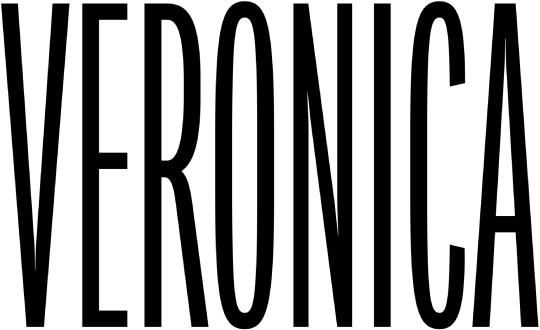


35. Marisol Nichols – Race: Multiracial (Indigenous and White); Ethnicity (Father): Hungarian Ashkenazi-Jewish; Ethnicity (Mother): Mexican-American (Indigenous-Mayan/Mexican, Spanish)



36. Danai Gurira – Race: Black; Ethnicity (Father): Zimbabwean-African; Ethnicity (Mother): Zimbabwean-African



37. Logan Browning – Race: Multiracial (Black and White); Ethnicity (Father): African-American; Ethnicity (Mother): European-American



38. Tyra Banks – Race: Black; Ethnicity (Father): African-American; Ethnicity (Mother): African-American



39. Jamie Chung – Race: Asian (East Asian); Ethnicity (Father): Korean; Ethnicity (Mother): Korean



40. Cardi B – Race: Multiracial (Black, White); Ethnicity (Father): Dominican (Afro-Dominican, possibly Spanish); Ethnicity (Mother): Trinidadian (Afro-Trinidadian, Spanish)



41. Nathalie Emmanuel – Race: Multiracial (Black and White); Ethnicity (Father): Saint Lucian (Afro-Saint Lucian, English); Ethnicity (Mother): Dominican (Afro-Dominican, English)



Look for more in Part 2.
#alicia keys#thandie newton#camila mendes#mishel prada#halsey#zoe kravitz#zendaya#selena gomez#jennifer lopez#rihanna#beyonce#lauren ridloff#gina rodriguez#lupita nyong'o#aishwarya rai#nicki minaj#adriana lima#kat graham#shakira#eva longoria#jessica alba#zoe saldana#Lucy Liu#salma hayek#mariah carey#gabrielle union#halle berry#veronica merrell#Vanessa merrell#marisol nichols
195 notes
·
View notes
Photo


In The Lion King, stars are actually the spirits of dead lion kings.
In The Princess and the Frog, they’re (the spirits of dead) fireflies. (Pumbaa was right!)
Although, the star we see being born is Ray’s spirit.
Raymond, the Cajun firefly.
Many of the original settlers in Louisiana were Spanish Basques and Spanish Canary Islanders.
A Spanish variant of Raymond is Reymundo.
“Rey” is the Spanish word for King.
The Spanish word for Lion is Leon.
Louis’ voice actor is Michael-Leon Wooley.
Thank you for coming to my Ted Talk.
3 notes
·
View notes
Text
TELE-LOUISIANE
Los esclavos aborígenes canarios obligados a ocupar las tierras del sur de lo que es hoy Estados Unidos.
Canary Islanders of Louisiana
Wade Falcon · ·
0:19 / 0:29
Télé-Louisiane
·
On tonight’s episode of #LaVeillée on Louisiana Public Broadcasting, we discover another Louisiana heritage language: Isleño Spanish.
Esta noche. / Tonight. / À soir.
telelouisiane.com/laveillee
lpb.org/laveillee
📸: Eric Breaux Productions
Visit St. Bernard Los Isleños Museum Los Isleños Fiesta
#LaVeilléeSurLPB #TéléLouSurLPB #LaVeillée #StBernardParish #TéléLouSurLPB #LosIsleños #OnlyLouisiana #DelacroixIsland
https://www.facebook.com/groups/52179063441/?multi_permalinks=10161295672443442&hoisted_section_header_type=recently_seen&__cft__[0]=AZUK4ZPrc-bHRFCIRBb8fdh1qcBGaV9GzQHuBeQJEjx_SodaGPwvDaQ8OYEkWOfTajRQh8-DnMLqujEClt-VG41c-MdTs3AOrHwBBpYYOLR6vzVt9S4GN46li7MpotnFj2kdc0aD36S-MVm5MoJvj2wxCB6dMjHEM-j8JheXKM9iWHqSyzhORQs0PmMDF9Nm2ZccvL1Li8mshALpDITfKd9r&__tn__=%2CO%2CP-R
#tele-louisiane#luisiana#aborigenous#indigenous#history#culture#genocide#native#unesco#united nations#international criminal court#cou penal international#corte penal internacional#aborigenes#indigenas#historia#cultura#nativos#naciones unidas#canarias tiene identidad cultural propia#canarias la colonia mas antigua del mundo#descolonizacion de canarias#canarias#islas canarias#onu#icc#cpi#st bernard parish#delacroix island#canary islanders of louisiana
4 notes
·
View notes
Text
We've detected new gravitational waves, we just don't know where they come from (yet)
by Tara Murphy, Eric Thrane, and Qi Chu

A visualisation of a binary neutron star merger. NASA's Goddard Space Flight Center/CI Lab
The hunt for gravitational waves is back on with the announcement overnight of the detection of signals from what’s thought to be the merger of two neutron stars, the incredibly dense remains of a collapsed star.
The signals were actually picked up on Thursday April 25 – ANZAC Day here in Australia – from a binary merger named S190425z), only the second ever neutron star merger to be observed.
The twin detectors of the Laser Interferometer Gravitational-Wave Observatory (LIGO) – in Washington and Louisiana in the United States -— along with Virgo, located at the European Gravitational Observatory (EGO) in Italy, only resumed their operations on April 1 after a year and a half of upgrades. The latest result shows the hunt is back with a bang.
This is the third observing run (named O3) and soon after the merger signal was detected, astronomers around the world started searching for a host galaxy, but this time there was an extra challenge.
Where is the signal coming from?
When LIGO detects gravitational waves – the ripples in space-time predicted by Albert Einstein – we can work out some information quite accurately, such as the mass of merging neutron stars.
The images (below) of all the signals detected in the first and second observing runs of the detectors (named O1 and O2) show how each signal is unique. These differences allow us to work out the masses and distances to the objects.

Gravitational wave events detected by LIGO before O3. Each signal is different, revealing the properties of the merging objects. LIGO/VIrgo/Georgia Tech/S. Ghonge & K. Jani
But one thing that is harder to work out is where the signal is coming from?
We do this by triangulating the signal received at the three detectors (the two LIGO detectors in the US and the Virgo detector in Italy).
For the first detection of merging binary neutron stars, GW170817, we got lucky. We were able to narrow down the signal to a region of 28 square degrees on the sky (about 140 times the area of the full Moon).
But S190425z was only detected in a single LIGO detector and Virgo, and hence the localisation region was 10,000 square degrees. That’s about a quarter of the entire sky.

LIGO localisation for the neutron star merger S190425z. The area covers about a quarter of the entire sky. LIGO
The neutron star merger is also estimated to have happened about 500 million light-years away from Earth.
Needle in a haystack
Astronomers around the world, including Australian teams, have been using telescopes from the outback of Western Australia to The Canary Islands in the Atlantic Ocean, to search for possible counterparts: galaxies that could be hosting the neutron star merger.
To do this we had to work out which of the 45,000 possible galaxies in the region would be the most likely hosts.
No confirmed matches have been found, so far, but on the way, we’ve found lots of other interesting events such as new supernovae - the explosions that occur when massive stars die.
This effort is an integral part of the Australian gravitational-wave hunting team at OzGrav. OzGrav supports more than 100 scientists and engineers who are making critical contributions to improving LIGO instrumentation, data analysis software, and interpretation of the results.
How far can LIGO see now?
The recent upgrades of LIGO and Virgo mean astronomers can now detect gravitational waves from binary neutron star mergers further than ever before, up to 500 million light years away.
Any signals we detect from these distant mergers would have left their host galaxy around the time the first fish evolved on Earth (two hundred million years before dinosaurs came along).
Every second counts when astronomers are trying to use gravitational wave triggers to capture the last moments as neutron stars collide.
The team at the University of Western Australia node of OzGrav has developed a real-time search program (called “SPIIR”) to trigger gravitational waves from the LIGO-Virgo data within ten seconds.
The team has already identified four gravitational-wave candidates, and in the future it may even be possible to eventually alert astronomers before the emission of any light from a merger.
Beating the noise
An important part of the LIGO O3 upgrade was the installation of instruments called “quantum squeezers”. The squeezers are based on an Australian National University design and ANU OzGrav scientists were part of the team that installed and commissioned them.
One of the most significant engineering challenges in building LIGO is reducing noise that can drown out the miniscule gravitational-wave signals. This noise comes from many different sources, such as seismic noise from earthquakes, ocean waves and even vehicle traffic.
Another source of noise is quantum noise, due to the discrete nature of light. The squeezers dampen this quantum noise by changing the quantum properties of the light used by LIGO to detect ripples in the fabric of spacetime.

LIGO team members (left-to-right: Fabrice Matichard, Sheila Dwyer, Hugh Radkins) install in-vacuum equipment as part of the squeezed-light upgrade. Nutsinee Kijbunchoo/ANU
Another event detected
With the third observing run now well underway, we’re already seeing the results of these improvements to LIGO instrumentation and software.
In addition to the technical improvements there’s another marked contrast with previous observing runs: all detections are being released to the astronomy community, and the wider public, straight away.
In the midst of the excitement about S190425z there was another gravitational-wave alert a day later - a candidate signal with properties that suggest it could be a merger of a neutron star and a black hole.
This was picked up by all three detectors but as yet we also have no host identified for this, so we are not yet sure of the nature of this event. But it’s another hint of the exciting results yet to come.

About The Authors:
Tara Murphy is a Professor and ARC Future Fellow at the University of Sydney; Eric Thrane is an Associate professor at Monash University, and Qi Chu is a Research fellow at the University of Western Australia
This article is republished from our content partners at The Conversation under a Creative Commons license.
23 notes
·
View notes
Text
https://www.nytimes.com/interactive/2019/08/14/magazine/sugar-slave-trade-slavery.html
The sugar that saturates the American diet has a barbaric history as the 'white gold' that fueled slavery, writes Khalil Gibran Muhammad. "It was the introduction of sugar slavery in the New World that changed everything."
The sugar that saturates the American diet has a barbaric history as the ‘white gold’ that fueled slavery.
By Khalil Gibran Muhammad |Published August 14, 2019 | New York Times "1619 Project" | Posted August 24, 2019 9:58 AM ET |
Domino Sugar’s Chalmette Refinery in Arabi, La., sits on the edge of the mighty Mississippi River, about five miles east by way of the river’s bend from the French Quarter, and less than a mile down from the Lower Ninth Ward, where Hurricane Katrina and the failed levees destroyed so many black lives. It is North America’s largest sugar refinery, making nearly two billion pounds of sugar and sugar products annually. Those ubiquitous four-pound yellow paper bags emblazoned with the company logo are produced here at a rate of 120 bags a minute, 24 hours a day, seven days a week during operating season.
The United States makes about nine million tons of sugar annually, ranking it sixth in global production. The United States sugar industry receives as much as $4 billion in annual subsidies in the form of price supports, guaranteed crop loans, tariffs and regulated imports of foreign sugar, which by some estimates is about half the price per pound of domestic sugar. Louisiana’s sugar-cane industry is by itself worth $3 billion, generating an estimated 16,400 jobs.
A vast majority of that domestic sugar stays in this country, with an additional two to three million tons imported each year. Americans consume as much as 77.1 pounds of sugar and related sweeteners per person per year, according to United States Department of Agriculture data. That’s nearly twice the limit the department recommends, based on a 2,000-calorie diet.
Sugar has been linked in the United States to diabetes, obesity and cancer. If it is killing all of us, it is killing black people faster. Over the last 30 years, the rate of Americans who are obese or overweight grew 27 percent among all adults, to 71 percent from 56 percent, according to the Centers for Disease Control, with African-Americans overrepresented in the national figures. During the same period, diabetes rates overall nearly tripled. Among black non-Hispanic women, they are nearly double those of white non-Hispanic women, and one and a half times higher for black men than white men.
None of this — the extraordinary mass commodification of sugar, its economic might and outsize impact on the American diet and health — was in any way foreordained, or even predictable, when Christopher Columbus made his second voyage across the Atlantic Ocean in 1493, bringing sugar-cane stalks with him from the Spanish Canary Islands. In Europe at that time, refined sugar was a luxury product, the backbreaking toil and dangerous labor required in its manufacture an insuperable barrier to production in anything approaching bulk. It seems reasonable to imagine that it might have remained so if it weren’t for the establishment of an enormous market in enslaved laborers who had no way to opt out of the treacherous work.
For thousands of years, cane was a heavy and unwieldy crop that had to be cut by hand and immediately ground to release the juice inside, lest it spoil within a day or two. Even before harvest time, rows had to be dug, stalks planted and plentiful wood chopped as fuel for boiling the liquid and reducing it to crystals and molasses. From the earliest traces of cane domestication on the Pacific island of New Guinea 10,000 years ago to its island-hopping advance to ancient India in 350 B.C., sugar was locally consumed and very labor-intensive. It remained little more than an exotic spice, medicinal glaze or sweetener for elite palates.
It was the introduction of sugar slavery in the New World that changed everything. “The true Age of Sugar had begun — and it was doing more to reshape the world than any ruler, empire or war had ever done,” Marc Aronson and Marina Budhos write in their 2010 book, “Sugar Changed the World.” Over the four centuries that followed Columbus’s arrival, on the mainlands of Central and South America in Mexico, Guyana and Brazil as well as on the sugar islands of the West Indies — Cuba, Barbados and Jamaica, among others — countless indigenous lives were destroyed and nearly 11 million Africans were enslaved, just counting those who survived the Middle Passage.
“White gold” drove trade in goods and people, fueled the wealth of European nations and, for the British in particular, shored up the financing of their North American colonies. “There was direct trade among the colonies and between the colonies and Europe, but much of the Atlantic trade was triangular: enslaved people from Africa; sugar from the West Indies and Brazil; money and manufactures from Europe,” writes the Harvard historian Walter Johnson in his 1999 book, “Soul by Soul: Life Inside the Antebellum Slave Market.” “People were traded along the bottom of the triangle; profits would stick at the top.”
Before French Jesuit priests planted the first cane stalk near Baronne Street in New Orleans in 1751, sugar was already a huge moneymaker in British New York. By the 1720s, one of every two ships in the city’s port was either arriving from or heading to the Caribbean, importing sugar and enslaved people and exporting flour, meat and shipbuilding supplies. The trade was so lucrative that Wall Street’s most impressive buildings were Trinity Church at one end, facing the Hudson River, and the five-story sugar warehouses on the other, close to the East River and near the busy slave market. New York’s enslaved population reached 20 percent, prompting the New York General Assembly in 1730 to issue a consolidated slave code, making it “unlawful for above three slaves” to meet on their own, and authorizing “each town” to employ “a common whipper for their slaves.”
In 1795, Étienne de Boré, a New Orleans sugar planter, granulated the first sugar crystals in the Louisiana Territory. With the advent of sugar processing locally, sugar plantations exploded up and down both banks of the Mississippi River. All of this was possible because of the abundantly rich alluvial soil, combined with the technical mastery of seasoned French and Spanish planters from around the cane-growing basin of the Gulf and the Caribbean — and because of the toil of thousands of enslaved people. More French planters and their enslaved expert sugar workers poured into Louisiana as Toussaint L’Ouverture and Jean-Jacques Dessalines led a successful revolution to secure Haiti’s independence from France.
Within five decades, Louisiana planters were producing a quarter of the world’s cane-sugar supply. During her antebellum reign, Queen Sugar bested King Cotton locally, making Louisiana the second-richest state in per capita wealth. According to the historian Richard Follett, the state ranked third in banking capital behind New York and Massachusetts in 1840. The value of enslaved people alone represented tens of millions of dollars in capital that financed investments, loans and businesses. Much of that investment funneled back into the sugar mills, the “most industrialized sector of Southern agriculture,” Follett writes in his 2005 book, “Sugar Masters: Planters and Slaves in Louisiana’s Cane World 1820-1860.” No other agricultural region came close to the amount of capital investment in farming by the eve of the Civil War. In 1853, Representative Miles Taylor of Louisiana bragged that his state’s success was “without parallel in the United States, or indeed in the world in any branch of industry.”
The enslaved population soared, quadrupling over a 20-year period to 125,000 souls in the mid-19th century. New Orleans became the Walmart of people-selling. The number of enslaved labor crews doubled on sugar plantations. And in every sugar parish, black people outnumbered whites. These were some of the most skilled laborers, doing some of the most dangerous agricultural and industrial work in the United States.
In the mill, alongside adults, children toiled like factory workers with assembly-line precision and discipline under the constant threat of boiling hot kettles, open furnaces and grinding rollers. “All along the endless carrier are ranged slave children, whose business it is to place the cane upon it, when it is conveyed through the shed into the main building,” wrote Solomon Northup in “Twelve Years a Slave,” his 1853 memoir of being kidnapped and forced into slavery on Louisiana plantations.
To achieve the highest efficiency, as in the round-the-clock Domino refinery today, sugar houses operated night and day. “On cane plantations in sugar time, there is no distinction as to the days of the week,” Northup wrote. Fatigue might mean losing an arm to the grinding rollers or being flayed for failing to keep up. Resistance was often met with sadistic cruelty.
A formerly enslaved black woman named Mrs. Webb described a torture chamber used by her owner, Valsin Marmillion. “One of his cruelties was to place a disobedient slave, standing in a box, in which there were nails placed in such a manner that the poor creature was unable to move,” she told a W.P.A. interviewer in 1940. “He was powerless even to chase the flies, or sometimes ants crawling on some parts of his body.”
Louisiana led the nation in destroying the lives of black people in the name of economic efficiency. The historian Michael Tadman found that Louisiana sugar parishes had a pattern of “deaths exceeding births.” Backbreaking labor and “inadequate net nutrition meant that slaves working on sugar plantations were, compared with other working-age slaves in the United States, far less able to resist the common and life-threatening diseases of dirt and poverty,” wrote Tadman in a 2000 study published in the American Historical Review. Life expectancy was less like that on a cotton plantation and closer to that of a Jamaican cane field, where the most overworked and abused could drop dead after seven years.
Most of these stories of brutality, torture and premature death have never been told in classroom textbooks or historical museums. They have been refined and whitewashed in the mills and factories of Southern folklore: the romantic South, the Lost Cause, the popular “moonlight and magnolias” plantation tours so important to Louisiana’s agritourism today.
When I arrived at the Whitney Plantation Museum on a hot day in June, I mentioned to Ashley Rogers, 36, the museum’s executive director, that I had passed the Nelson Coleman Correctional Center about 15 miles back along the way. “You passed a dump and a prison on your way to a plantation,” she said. “These are not coincidences.”
The Whitney, which opened five years ago as the only sugar-slavery museum in the nation, rests squarely in a geography of human detritus. The museum tells of the everyday struggles and resistance of black people who didn’t lose their dignity even when they lost everything else. It sits on the west bank of the Mississippi at the northern edge of the St. John the Baptist Parish, home to dozens of once-thriving sugar plantations; Marmillion’s plantation and torture box were just a few miles down from Whitney.
The museum also sits across the river from the site of the German Coast uprising in 1811, one of the largest revolts of enslaved people in United States history. As many as 500 sugar rebels joined a liberation army heading toward New Orleans, only to be cut down by federal troops and local militia; no record of their actual plans survives. About a hundred were killed in battle or executed later, many with their heads severed and placed on pikes throughout the region. Based on historians’ estimates, the execution tally was nearly twice as high as the number in Nat Turner’s more famous 1831 rebellion. The revolt has been virtually redacted from the historical record. But not at Whitney. And yet tourists, Rogers said, sometimes admit to her, a white woman, that they are warned by hotel concierges and tour operators that Whitney is the one misrepresenting the past. “You are meant to empathize with the owners as their guests,” Rogers told me in her office. In Louisiana’s plantation tourism, she said, “the currency has been the distortion of the past.”
The landscape bears witness and corroborates Whitney’s version of history. Although the Coleman jail opened in 2001 and is named for an African-American sheriff’s deputy who died in the line of duty, Rogers connects it to a longer history of coerced labor, land theft and racial control after slavery. Sugar cane grows on farms all around the jail, but at the nearby Louisiana State Penitentiary, or Angola, prisoners grow it. Angola is the largest maximum-security prison by land mass in the nation. It opened in its current location in 1901 and took the name of one of the plantations that had occupied the land. Even today, incarcerated men harvest Angola’s cane, which is turned into syrup and sold on-site.
From slavery to freedom, many black Louisianans found that the crushing work of sugar cane remained mostly the same. Even with Reconstruction delivering civil rights for the first time, white planters continued to dominate landownership. Freedmen and freedwomen had little choice but to live in somebody’s old slave quarters. As new wage earners, they negotiated the best terms they could, signed labor contracts for up to a year and moved frequently from one plantation to another in search of a life whose daily rhythms beat differently than before. And yet, even compared with sharecropping on cotton plantations, Rogers said, “sugar plantations did a better job preserving racial hierarchy.” As a rule, the historian John C. Rodrigue writes, “plantation labor overshadowed black people’s lives in the sugar region until well into the 20th century.”
Sometimes black cane workers resisted collectively by striking during planting and harvesting time — threatening to ruin the crop. Wages and working conditions occasionally improved. But other times workers met swift and violent reprisals. After a major labor insurgency in 1887, led by the Knights of Labor, a national union, at least 30 black people — some estimated hundreds — were killed in their homes and on the streets of Thibodaux, La. “I think this will settle the question of who is to rule, the nigger or the white man, for the next 50 years,” a local white planter’s widow, Mary Pugh, wrote, rejoicing, to her son.
Many African-Americans aspired to own or rent their own sugar-cane farms in the late 19th century, but faced deliberate efforts to limit black farm and land owning. The historian Rebecca Scott found that although “black farmers were occasionally able to buy plots of cane land from bankrupt estates, or otherwise establish themselves as suppliers, the trend was for planters to seek to establish relations with white tenants or sharecroppers who could provide cane for the mill.”
By World War II, many black people began to move not simply from one plantation to another, but from a cane field to a car factory in the North. By then, harvesting machines had begun to take over some, but not all, of the work. With fewer and fewer black workers in the industry, and after efforts in the late 1800s to recruit Chinese, Italian, Irish and German immigrant workers had already failed, labor recruiters in Louisiana and Florida sought workers in other states.
In 1942, the Department of Justice began a major investigation into the recruiting practices of one of the largest sugar producers in the nation, the United States Sugar Corporation, a South Florida company. Black men unfamiliar with the brutal nature of the work were promised seasonal sugar jobs at high wages, only to be forced into debt peonage, immediately accruing the cost of their transportation, lodging and equipment — all for $1.80 a day. One man testified that the conditions were so bad, “It wasn’t no freedom; it was worse than the pen.” Federal investigators agreed. When workers tried to escape, the F.B.I. found, they were captured on the highway or “shot at while trying to hitch rides on the sugar trains.” The company was indicted by a federal grand jury in Tampa for “carrying out a conspiracy to commit slavery,” wrote Alec Wilkinson, in his 1989 book, “Big Sugar: Seasons in the Cane Fields of Florida.” (The indictment was ultimately quashed on procedural grounds.) A congressional investigation in the 1980s found that sugar companies had systematically tried to exploit seasonal West Indian workers to maintain absolute control over them with the constant threat of immediately sending them back to where they came from.
At the Whitney plantation, which operated continuously from 1752 to 1975, its museum staff of 12 is nearly all African-American women. A third of them have immediate relatives who either worked there or were born there in the 1960s and ’70s. These black women show tourists the same slave cabins and the same cane fields their own relatives knew all too well.
Farm laborers, mill workers and refinery employees make up the 16,400 jobs of Louisiana’s sugar-cane industry. But it is the owners of the 11 mills and 391 commercial farms who have the most influence and greatest share of the wealth. And the number of black sugar-cane farmers in Louisiana is most likely in the single digits, based on estimates from people who work in the industry. They are the exceedingly rare exceptions to a system designed to codify black loss.
And yet two of these black farmers, Charles Guidry and Eddie Lewis III, have been featured in a number of prominent news items and marketing materials out of proportion to their representation and economic footprint in the industry. Lewis and Guidry have appeared in separate online videos. The American Sugar Cane League has highlighted the same pair separately in its online newsletter, Sugar News.
Lewis has no illusions about why the marketing focuses on him, he told me; sugar cane is a lucrative business, and to keep it that way, the industry has to work with the government. “You need a few minorities in there, because these mills survive off having minorities involved with the mill to get these huge government loans,” he said. A former financial adviser at Morgan Stanley, Lewis, 36, chose to leave a successful career in finance to take his rightful place as a fifth-generation farmer. “My family was farming in the late 1800s” near the same land, he says, that his enslaved ancestors once worked. Much of the 3,000 acres he now farms comes from relationships with white landowners his father, Eddie Lewis Jr., and his grandfather before him, built and maintained.
Lewis is the minority adviser for the federal Farm Service Agency (F.S.A.) in St. Martin and Lafayette Parish, and also participates in lobbying federal legislators. He says he does it because the stakes are so high. If things don’t change, Lewis told me, “I’m probably one of two or three that’s going to be farming in the next 10 to 15 years. They’re trying to basically extinct us.” As control of the industry consolidates in fewer and fewer hands, Lewis believes black sugar-cane farmers will no longer exist, part of a long-term trend nationally, where the total proportion of all African-American farmers has plummeted since the early 1900s, to less than 2 percent from more than 14 percent, with 90 percent of black farmers’ land lost amid decades of racist actions by government agencies, banks and real estate developers.
“There’s still a few good white men around here,” Lewis told me. “It’s not to say it’s all bad. But this is definitely a community where you still have to say, ‘Yes sir,’ ‘Yes, ma’am,’ and accept ‘boy’ and different things like that.”
One of the biggest players in that community is M.A. Patout and Son, the largest sugar-cane mill company in Louisiana. Founded in 1825, Patout has been known to boast that it is “the oldest complete family-owned and operated manufacturer of raw sugar in the United States.” It owns three of the 11 remaining sugar-cane mills in Louisiana, processing roughly a third of the cane in the state.
The company is being sued by a former fourth-generation black farmer. As first reported in The Guardian, Wenceslaus Provost Jr. claims the company breached a harvesting contract in an effort to deliberately sabotage his business. Provost, who goes by the first name June, and his wife, Angie, who is also a farmer, lost their home to foreclosure in 2018, after defaulting on F.S.A.-guaranteed crop loans. June Provost has also filed a federal lawsuit against First Guaranty Bank and a bank senior vice president for claims related to lending discrimination, as well as for mail and wire fraud in reporting false information to federal loan officials. The suit names a whistle-blower, a federal loan officer, who, in April 2015, “informed Mr. Provost that he had been systematically discriminated against by First Guaranty Bank,” the lawsuit reads.
(In court filings, M.A. Patout and Son denied that it breached the contract. Representatives for the company did not respond to requests for comment. In court filings, First Guaranty Bank and the senior vice president also denied Provost’s claims. Their representatives did not respond to requests for comment.)
Lewis is himself a litigant in a separate petition against white landowners. He claims they “unilaterally, arbitrarily and without just cause terminated” a seven-year-old agreement to operate his sugar-cane farm on their land, causing him to lose the value of the crop still growing there. Lewis is seeking damages of more than $200,000, based on an independent appraisal he obtained, court records show. The landowners did not respond to requests for comment.
But the new lessee, Ryan Doré, a white farmer, did confirm with me that he is now leasing the land and has offered to pay Lewis what a county agent assessed as the crop’s worth, about $50,000. Doré does not dispute the amount of Lewis’s sugar cane on the 86.16 acres. What he disputes is Lewis’s ability to make the same crop as profitable as he would. Doré, who credits M.A. Patout and Son for getting him started in sugar-cane farming, also told me he is farming some of the land June Provost had farmed.
Lewis and the Provosts say they believe Doré is using his position as an elected F.S.A. committee member to gain an unfair advantage over black farmers with white landowners. “He’s privileged with a lot of information,” Lewis said.
Doré denied he is abusing his F.S.A. position and countered that “the Lewis boy” is trying to “make this a black-white deal.” Doré insisted that “both those guys simply lost their acreage for one reason and one reason only: They are horrible farmers.”
It’s impossible to listen to the stories that Lewis and the Provosts tell and not hear echoes of the policies and practices that have been used since Reconstruction to maintain the racial caste system that sugar slavery helped create. The crop, land and farm theft that they claim harks back to the New Deal era, when Southern F.S.A. committees denied black farmers government funding.
“June and I hope to create a dent in these oppressive tactics for future generations,” Angie Provost told me on the same day this spring that a congressional subcommittee held hearings on reparations. “To this day we are harassed, retaliated against and denied the true DNA of our past.”
Khalil Gibran Muhammad is a Suzanne Young Murray professor at the Radcliffe Institute for Advanced Study at Harvard University and author of “The Condemnation of Blackness.” Tiya Miles is a professor in the history department at Harvard and the author, most recently, of “The Dawn of Detroit: A Chronicle of Slavery and Freedom in the City of the Straits.”
THE ENSLAVED PECAN PIONEER
By Tiya Miles | Published August 14, 2019 | New York Times "1619 Project" | Posted August 24, 2019 10:30AM ET |
Pecans are the nut of choice when it comes to satisfying America’s sweet tooth, with the Thanksgiving and Christmas holiday season being the pecan’s most popular time, when the nut graces the rich pie named for it. Southerners claim the pecan along with the cornbread and collard greens that distinguish the regional table, and the South looms large in our imaginations as this nut’s mother country.
The presence of pecan pralines in every Southern gift shop from South Carolina to Texas, and our view of the nut as regional fare, masks a crucial chapter in the story of the pecan: It was an enslaved man who made the wide cultivation of this nut possible.
Pecan trees are native to the middle southwestern region of the Mississippi River Valley and the Gulf Coast of Texas and Mexico. While the trees can live for a hundred years or more, they do not produce nuts in the first years of life, and the kinds of nuts they produce are wildly variable in size, shape, flavor and ease of shell removal. Indigenous people worked around this variability, harvesting the nuts for hundreds and probably thousands of years, camping near the groves in season, trading the nuts in a network that stretched across the continent, and lending the food the name we have come to know it by: paccan.
Once white Southerners became fans of the nut, they set about trying to standardize its fruit by engineering the perfect pecan tree. Planters tried to cultivate pecan trees for a commercial market beginning at least as early as the 1820s, when a well-known planter from South Carolina named Abner Landrum published detailed descriptions of his attempt in the American Farmer periodical. In the mid-1840s, a planter in Louisiana sent cuttings of a much-prized pecan tree over to his neighbor J.T. Roman, the owner of Oak Alley Plantation. Roman did what many enslavers were accustomed to in that period: He turned the impossible work over to an enslaved person with vast capabilities, a man whose name we know only as Antoine. Antoine undertook the delicate task of grafting the pecan cuttings onto the limbs of different tree species on the plantation grounds. Many specimens thrived, and Antoine fashioned still more trees, selecting for nuts with favorable qualities. It was Antoine who successfully created what would become the country’s first commercially viable pecan varietal.
Decades later, a new owner of Oak Alley, Hubert Bonzano, exhibited nuts from Antoine’s trees at the Centennial Exposition of 1876, the World’s Fair held in Philadelphia and a major showcase for American innovation. As the horticulturalist Lenny Wells has recorded, the exhibited nuts received a commendation from the Yale botanist William H. Brewer, who praised them for their “remarkably large size, tenderness of shell and very special excellence.” Coined “the Centennial,” Antoine’s pecan varietal was then seized upon for commercial production (other varieties have since become the standard).
Was Antoine aware of his creation’s triumph? No one knows. As the historian James McWilliams writes in “The Pecan: A History of America’s Native Nut” (2013): “History leaves no record as to the former slave gardener’s location — or whether he was even alive — when the nuts from the tree he grafted were praised by the nation’s leading agricultural experts.” The tree never bore the name of the man who had handcrafted it and developed a full-scale orchard on the Oak Alley Plantation before he slipped into the shadow of history.
#american history#african american history#history#1619#1619project#politics and government#us politics#politics#u.s. news#u.s. economy
6 notes
·
View notes
Photo

Hey guys! So here on Anemoia, we will be allowing character histories and personalities from the three primary canon comic timelines (new earth, prime earth, and rebirth), with any amount of in-mixing from those or any other DC adaptations. For example, if you wanted to play Bruce Wayne from New Earth but preferred the way rebirth handled a specific event or facet of his personality, you’d be more than free to add that to your characterization! The same concept goes for DCAU/DCEU/etc timelines, or other adaptations. Anemoia is meant to be a mixing of canons, so we definitely encourage making characters your own!
Because we won’t solely be following any one single canon timeline from the comics for the site’s history, we’ve written our own timeline specific to the Anemoia universe. These are the only solid, unalterable events in our universe, so they’re pretty important! As such, our TIMELINE will be the first site preview and can be found under the cut! Enjoy, and feel free to send a message if you have any questions about specific events!
** Lastly, this timeline will largely remain the same but it IS subject to minor changes by staff before the site is actually open.
334BC Vandal Savage, under the name Alexander the Great, begins a series of campaigns that lead to him conquering the Persian Empire.
45BC Under the name Julius Caesar, Vandal Savage wins the Great Roman Civil War assuming total control of the government.
1200S Vandal Savage begins a successful campaign across Asia and Eastern Europe, creating the Mongol Empire under the name Ghenghis Khan.
1400S Ruling Wallachia three separate times, Vandal Savage, under the name of Vlad III Dracul becomes a national hero and considered one of the most important rulers in Wallachian history. He ultimately goes on to inspire stories of Dracula
1888 Vandal Savage murders at least 5 women in London, England becoming known as Jack the Ripper. This is the last public persona Vandal Savage takes, deciding to work from the shadows from then on out.
1918 Diana Prince arrives in the world of men.
1961 Justice Society is formed.
1979 Jonathan and Martha Kent find and adopt a young Clark Kent.
1995 John Constantine (19) attempts to save a young girl from a demon, ultimately failing and Astra Louge is dragged to hell by the demon Nergal.
1997 Bruce Wayne (23) becomes the Batman.
1998 Reverend Richard Jiwe is murdered by his half brother General Maksai in order to claim the Tantu Totem.
1999 Jefferson Pierce (24) returns to Southside, Metropolis. Finding it overridden by crime, he takes on the mantle of Black Lightning.
2000 Alec Holland (25) is transformed into Swamp Thing after the explosion of his lab releases a bio-restorative chemical he had been working on into the Louisiana swamp.
2000 Dick Grayson (8) is taken in by Bruce Wayne after the death of his parents. He becomes the first Robin and works closely with Batman.
2001 Clark Kent (22) begins his superhero career officially -- newspapers and media beging calling him the Superman.
2001 Oliver Queen (20) is stranded on a desert island. When he returns home he becomes the Green Arrow.
2001 Ted Kord (21) becomes the second Blue Beetle, but does not inherit his mentor's ability to use the Scarab.
2003 Dinah Lance (18) becomes the second Black Canary, assuming her mother's mantle.
2003 Hal Jordan becomes the Green Lantern for sector 2814.
2004 Arthur Curry (23) becomes Aquaman.
2004 Donna Troy (13) becomes Wonder Girl.
2004 Roy Harper (14) becomes Speedy.
2004 Barbara Gordon (15) becomes the first Batgirl.
2005 Barry Allen (22) becomes The Flash.
2005 Guy Gardener receives a green lantern ring, becoming a backup lantern for sector 2814.
2006 Attempted invasion by Apokolips prompts the formation of the Justice League by Aquaman, Batman, The Flash, Green Lantern, Martian Manhunter, Superman, and Wonder Woman. They add to their ranks over the years.
2006 Wally West (15) becomes Kid Flash.
2006 Garth becomes (15) Aqualad.
2007 The Teen Titans are formed by Aqualad, Kid Flash, Robin, Speedy and Wonder Girl. Over the next few years, they add to their ranks.
2007 Due to a crippling accident, John Stewart is recruited to the Green Lantern Corps to replace Guy Gardener.
2009 Dick Grayson (17) assumes the new alias, Nightwing.
2010 Jason Todd (11) becomes the second Robin.
2011 Michael Jon Carter (29) travels back in time from the 25th century and using his knowledge of history, stages high publicity heroics.
2012 Barbara Gordon (23) is shot by The Joker. After recovering, and in spite of paralysis, she assumes the new alias, Oracle, and continues to aid others in the field.
2012 There is a lab accident in STAR labs while Silas Stone is investigating Apokoliptan technology. His son, Victor Stone (18) is caught in the blast and subsequently becomes Cyborg.
2013 Jason Todd (14) is killed by The Joker.
2013 Dick Grayson (21) moves to Bludhaven.
2013 Mari McCabe (25) returns to Zambesi, reclaiming the Tantu Totem from her uncle. Mari becomes Vixen.
2014 Tim Drake (13) becomes the third Robin.
2014 Doomsday crashlands on Earth and immediately begins a path of terror and destruction. When the Justice League is deployed to battle him, they fall in a matter of minutes. Eventually, Superman is able to defeat Doomsday, but not without sacrificing himself.
2014 Superman's body is taken from his mausoleum by Kryptonian technology, but not before Lex Luthor is able to obtain a sample of his DNA.
2014 Black Adam with a small team he assembled stages a military take over of the country Kahndaq, freeing it from the reign of a brutal dictator.
2014 Sue Dibny, wife of the Elongated Man (Ralph Dibny), is murdered, her body horribly burned.
2015 In the wake of Sue Dibny's death, Bruce Wayne begins work on project Brother MK I.
2015 Following Superman's death, four men claiming to be Superman emerges in Metropolis. The Eradicator, Cyborg Superman, Superboy and Steel -- all using the name Superman, some even sharing some of his memories.
2015 Mongul invades and subsequently destroys Coast City with a large spaceship, reducing the city and everyone in it to a giant crater.
2015 The real Superman reemerges from the kryptonian matrix which had been healing him, originally he returns with only a fraction of his powers.
2016 Possessed by the entity of fear, Parallax, Hal Jordan nearly destroys the Green Lantern corps, leaving those few survivors to salvage what has been lost.
2016 Kyle Rayner becomes the new Green Lantern after the fall of the corps, wielding one of the last green rings.
2016 Young Justice is formed by Impulse, Robin, Superboy, and Wonder Girl. They add to their ranks over the years.
2016 Anissa Pierce (18) and Jennifer Pierce (16) take up the superhero mantle like their father, calling themselves Thunder and Lightning.
2017 Jason Todd (18) returns to Gotham with the new alias, Red Hood.
2017 Stephanie Brown (17) becomes the fourth Robin for a short time. She eventually trains under Barbara Gordon to become the third Batgirl.
2017 Bludhaven is destroyed in a chemical attack known as "Chemo" and is quarantined.
2017 Having learned from his first defeat by the Justice League, Darkside employs agents to earth to destabilize Earth's power structure, he does this by trying to shake humanity's faith in their heroes. The most prominent of these agents is Glorious Godfrey, or G. Gordon Godfrey as he's known in his television personality.
2017 The United Nations creates Checkmate, a chartered metahuman monitoring force.
2017 Wally West takes up the mantle of The Flash, alongside Barry. Wallace West takes the title of Kid Flash.
2018 The first Observational Metahuman Activity Construct (OMAC) is officially created, with the intention to gather information on metahumans throughout the world -- both hero and villain.
2018 Young Justice renames itself ‘Legacy’ as they become increasingly stable and serious as a team. They earn a government sanction.
2018 Simon Baz (17) becomes a new Green Lantern for sector 2814.
2018 Children across the globe are being tested for the metahuman gene and many of them are going missing, sold into metahuman trafficking.
2018 Bruce Wayne is “killed” by Darkseid. Dick Grayson takes over the title of Batman.
2018 Damian Wayne (17) arrives in Gotham after Talia al Ghul reveals that he is Bruce Wayne's son. He’s mentored by Dick Grayson, and takes up the mantle of Robin. Tim Drake becomes Red Robin.
2019 Jessica Cruz (18) becomes the newest Green Lantern for sector 2814.
2019 Jaime Reyes (18) is found by the Scarab, becoming the third Blue Beetle.
2019 Bruce Wayne is returned to his proper place in time. Damian Wayne (18) creates a new branch of the Teen Titans separate from the Titans, primarily lead and mentored by old members of the original team.
1 note
·
View note
Text
While cataloging some genealogy books for the Louisiana Room, I came across what I’m pretty sure is a record of my actual ancestors’ arrival to the states.
On Dec 9, 1778, the San Juan Nepomucenio sailed from the Canary Islands to New Orleans under Captain Don Domingo Morera with new recruits to fight in the Infantry of Louisiana. Including one Domingo Truxillo, his wife, Catalina Maria, and his children Antonio, Josef, Juan, and Marcelina.
There’s another Domingo Truxillo on a different boat, but I’m pretty sure I remember the family tree Dad gave me including Catalina and Antonio (14 at the time of passage), and the other Domingo didn’t have any family, which doesn’t work, because I’m pretty sure Domingo actually died in the American Revolution.
Anyway. Just thought that was kind of cool.
Edit: told Dad about it and I was right about it being the first Domingo. Antonio is the son we're descended from. (There's always a Tony in our family, something that I thought was from the Sicilian side but nope turns out 8t goes back to Canary Islands.)
#library stuff#my stupid life#i wonder when we changed the pronunciation tho#it wouldn't have been right away i don't think#not if they would have still been in a whole community of canary islanders
8 notes
·
View notes
Text
America’s Biggest Financial Threat Isn’t Government Spending. It’s the Cost of ‘Climate Change’
Republicans claim that the Inflation Reduction Act, Biden’s climate bill, represents reckless government spending. Guess what’s way more reckless? Ignoring the costs of climate change.
— By Steven Bingler and Martin C. Pedersen | August 15, 2022

A house rests on a bridge near the Whitesburg Recycling Center in Letcher County, Kentucky, on Friday, July 29, 2022. Ryan C. Hermens/Lexington Herald-Leader/Tribune News Service/Getty Images
The passage of the Biden Administration’s climate change package, the so-called “Inflation Reduction Act,” has predictably split along partisan lines, with Republicans characterizing the bill as an act of reckless government spending, certain to raise taxes and fuel further inflation. But does this act really represent reckless spending? The legislation authorizes $430 billion in spending, the bulk of which—more than $300 billion—is earmarked for tax credits; other spending and initiatives aimed at stimulating the clean energy economy; and reducing carbon emissions. (The bill also allows Medicare to negotiate prices with drug companies for certain expensive drugs.) The bill is funded in part by a 15% minimum tax on large corporations and an excise tax on companies that repurchase shares of their own stock. Given the scope of the problem, and the escalating future costs of climate inaction, this legislation is an exceedingly modest, but very necessary, first step.

Abandoned on the flooded Major Deegan Expressway in the Bronx following Hurricane Ida, 2021. Photo: Spencer Platt/Getty Images
Further delay, in fact, will compound future economic pain. That might be why, as the costs of addressing inland flooding in his own state continue to escalate, with some worrying about the future of many Appalachian towns, Senator Joe Manchin of West Virginia had a change of heart and allowed for passage of the legislation. Let’s hope it’s the beginning of a realization that our nation’s greatest financial threat isn’t a budget deficit, runaway inflation, declining productivity, or out of control government spending, but the impending and rapidly escalating cost of climate change. To paraphrase the preeminent schlock-rockers Bachman-Turner Overdrive, “you ain’t seen nothing yet!”

A bridge across Grapevine Creek at Chavies School Road in Perry County, Kentucky, is heavily damaged Tuesday, Aug. 2, 2022, following catastrophic flooding the previous week. Photo: Ryan C. Hermens/Lexington Herald-Leader/Tribune News Service/Getty Images
For exploding climate-related costs, it’s instructive to look at Steven’s home state of Louisiana, the proverbial canary in the coal mine. Following the devastating damage of Hurricanes Katrina, the financial impacts became so acute that policymakers were forced to consolidate all climate change planning and budgeting under a single Coastal Protection and Restoration Authority (CPRA), charged with identifying the most critical coastal restoration strategies and mitigation projects into a comprehensive Coastal Master Plan that is now updated every five years. To date more than 60 miles of barrier islands and berms have been constructed, 365 miles of levees improved, and 55,000 acres of wetlands revived. Going forward the CPRA is slated to spend $1 billion every year on mitigation projects, with the expectation that the program will continue at the same cost (or likely more) for at least another 50 years. For the imperiled state of Louisiana, this is not optional spending.
In addition to these costly government programs, additional financial burdens have fallen on the private sector. Four major insurance companies along with a handful of smaller ones have declared bankruptcy since Hurricane Ida, and others have decided to either pass the burden on to existing insurees or leave the state in the wake of accelerating rates of risk associated with storm damage. These private sector failures have long been backed up by federal and state insurance programs, but these programs are now reaching the limits of their political efficacy, leaving many local citizens facing personal bankruptcy and a painful migration to higher ground (or out of state completely).

Flooding in Houston, Texas, following Hurricane Harvey in 2017. Photo: Justin Sullivan/Getty Images
But Louisiana is hardly alone. The costly impacts of inland flooding, wildfires, and, perhaps most unforgiving of all environmental challenges, drought, are taking their toll on increasingly large swaths of the country. For example, more than half of Texas is currently experiencing extreme drought, and according to drought.gov, this year will be the sixth-driest year in the past 128 years. Meanwhile, it is August, the waters in the Gulf are heating up, and Houston, Galveston, and other vulnerable coastal cities are bracing once again for another active storm season. (Note that the price tag for rebuilding New Orleans and Houston, after Hurricanes Katrina and Harvey, was more than $250 billion, or more than half of the cost of the climate bill, for just two storms).

Residents sort through damaged and destroyed items after a night of heavy rain and wind caused many homes to flood during Hurricane Ida, 2021. Photo: Scott Heins/Getty Images
Kentucky’s recent flooding is also a tragic case in point. A new study from SafeHome.org ranks that state as the ninth worst for severe climate change-related events. Of the five risk factors measured—extreme heat, drought, inland flooding, wildfires, and coastal flooding—Kentucky is vulnerable to four. Climate Central found that 3.37% of Kentucky’s population is vulnerable to extreme heat, another 3.6% is at risk for inland flooding, and more than a third is at risk for wildfire. By mid-century Kentucky will experience 72 dangerous heat days (one of every five days), a 95% increase in summer drought, and an additional two weeks at risk for wildfires. At what point do we begin planning and, yes, spending accordingly, to mitigate these almost certain certainties? It’s important to mention that two of our most populated states, California and Florida, face even graver climate threats, with potential costs exponentially higher than those in Kentucky.
Across the United States, some 162 million people—nearly one in two—will most likely experience a decline in the quality of their environment, namely more heat and less water. For 93 million of them, the changes could be particularly severe, and by 2070, if carbon emissions rise at extreme levels, at least 4 million Americans could find themselves living at the fringe, in places decidedly outside the ideal niche for human habitation. And for those who think about escaping to the remaining few oases of climate change it may be useful to imagine the vast numbers of privileged refugees that will also be looking at the same solution.
As the impacts of climate change continue to accelerate, factors like human migration will bring even more social and economic challenges. Communities impacted first, and most harshly, are often those who have access to the fewest resources. In the 1930s Dust Bowl migration alone killed more than 7,000 farmers, left two million people homeless, and sharply reduced the nation’s agricultural output. If sea levels continue to rise as expected and the drought in the west persists, we’ll see similar if not more severe disruptions in our future.
This is only the beginning of a future that will leave our children and grandchildren to pay many trillions for environmental mitigation and restoration, due solely to the utter failure of our current generation to plan for these impending costs. And while our political leaders are haggling with what the fiscal watchdogs call “nice to have” or “like to have” legislation that gets them through the next election cycle, it is important to understand that the “must have” costs of climate change will be much less forgiving.
Sea walls, floating cities, carbon capture facilities, permanent and temporary housing to accommodate population shifts, renewable desalination plants, cooling centers, a green national energy grid—all these “must haves” and unforeseen others will require government spending that dwarfs the package Congress is about to pass. We spent about $6.5-trillion on wars in the Middle East. Climate change costs are likely to greatly exceed that. It’s time both political parties come to terms with that reality. Planning is always a good idea—but even better when we do it ahead of time.
— Steven Bingler is the founder and CEO of Concordia: Community Centered Planning and Design, headquartered in New Orleans, Louisiana. Concordia was responsible for planning and managing the Unified New Orleans Plan for the recovery of New Orleans after Hurricane Katrina and has recently completed a two-year Rockefeller Foundation funded “Sea Changes” report on planning for the impacts of climate change.
— Martin C. Pedersen is a New York-based writer, editor, and critic. He serves as executive director of the Common Edge Collaborative, a website dedicated to architecture, design, urbanism, and public engagement.
0 notes
Photo


Felipe and Letizia retrospective: June 16th
2005: Prince of Viana Awards
2008: Prince of Viana Awards
2009: Visited the Royal and Military Order of San Hermenegildo
2010: 2010 FIFA World Cup South Africa Group H match between Spain and Switzerland at Durban Stadium in Durban, South Africa. (1, 2, 3, 4)
2011: Audiences at la Zarzuela
2011: Closing of the International Talloires Network Meeting “Building a committed university, beyond the ivory tower”
2014: Casa Real released new pictures of Prince Felipe and his daughters to celebrate his upcoming proclamation
2017: Annual meeting with members of Princess of Asturias Foundation at El Pardo palace in Madrid, Spain. (1, 2)
2018: Audience to historians and rectors of the universities of New Orleans; Visited New Orleans Museum of Art (NOMA). (1, 2, 3, 4); Met with Richard Ford, Princess of Asturias Award 2016 and with people from Canary Islands living in Louisiana & Received at San Antonio International Airport by the Mayor and First Lady of San Antonio on day 2 of their official visit to New Orleans, San Antonio and Washington, USA
F&L Through the Years: 24/??
#King Felipe#Queen Letizia#King Felipe of Spain#Queen Letizia of Spain#King Felipe VI#King Felipe VI of Spain#F&L Through the Years#June16
10 notes
·
View notes
Text
Monday, October 26, 2020
California girds for most dangerous fire weather of year
(AP) California, which has endured its worst wildfire season in history, is bracing for the most dangerous winds of the year, a forecast that prompted the largest utility to announce plans to cut power Sunday to nearly 1 million people to guard against its equipment sparking new blazes. Pacific Gas & Electric Co. said the outages would start in far Northern California and ultimately could affect 386,000 customers in 38 counties, with many of the shutoffs concentrated in the San Francisco Bay Area. At a Saturday night briefing, utility officials said high winds were expected to arrive midday Sunday and reach 40 to 60 mph (64 to 97 kph) with higher gusts in the mountains. Winds that strong can topple trees and send branches into power lines. Some of the largest and deadliest fires in recent years were started by utility equipment being damaged by high winds, so PG&E has been aggressive about pre-emptively cutting power when fire conditions are most dangerous. This will be the fifth time PG&E has cut power to customers this year and by far the largest shutdown.
Tropical Storm Zeta to threaten Gulf Coast as 2020 ties record for most named storms
(Washington Post) Tropical Storm Zeta formed in the western Caribbean very early Sunday morning and is set to drift north and unleash wind, heavy rainfall and, potentially, ocean surge concerns as it approaches the U.S. Gulf Coast Tuesday night and Wednesday. Zeta becomes the record-tying 27th named storm of the 2020 Atlantic hurricane season, matching 2005 for the most names used in a season. Zeta is most likely to come ashore the Gulf Coast on Wednesday at tropical-storm strength, but there’s an outside chance that it could cross the coast as a hurricane. According to the Hurricane Center, Zeta “could bring storm surge, rainfall, and wind impacts to areas from Louisiana to the Florida Panhandle.”
Foreign students show less zeal for US since Trump took over
(AP) On a recruiting trip to India’s tech hub of Bangalore, Alan Cramb, the president of a reputable Chicago university, answered questions not just about dorms or tuition but also American work visas. The session with parents fell in the chaotic first months of Donald Trump’s presidency. After an inaugural address proclaiming “America first,” two travel bans, a suspended refugee program and hints at restricting skilled worker visas widely used by Indians, parents doubted their children’s futures in the U.S. “Nothing is happening here that isn’t being watched or interpreted around the world,” said Cramb, who leads the Illinois Institute of Technology, where international scholars have been half the student body. America was considered the premier destination for international students, with the promise of top-notch universities and unrivaled job opportunities. Yet, 2016 marked the start of a steep decline of new enrollees, something expected to continue with fresh rules limiting student visas, competition from other countries and a haphazard coronavirus response. The effect on the workforce will be considerable, experts predict, no matter the outcome of November’s election. For colleges that fear dwindling tuition and companies that worry about losing talent, the broader impact is harder to quantify: America seemingly losing its luster on a global stage. Roughly 5.3 million students study outside their home countries, a number that’s more than doubled since 2001. But the U.S. share dropped from 28% in 2001 to 21% last year, according to the Association of International Educators, or NAFSA.
Watching U.S. presidential vote, much of the world sees a less-strong America
(LA Times) In the eyes of much of the world the United States is a potent, yet faltering force, a conflicted nation heading into an election that will either redeem it or tug it farther away from the myths and promise that for generations defined it in capitals from Singapore to Paris and Buenos Aires to Nairobi. The stature and standing of the U.S. have plummeted in recent years, a number of international polls suggest. That trend has been exacerbated this year by what is widely perceived to be a disorderly and ineffectual governmental response to the COVID-19 pandemic, and now by a chaotic electoral process. For some, a once-bright beacon of egalitarian values has faded into an aloof, disfigured power. “The United States was always a model to follow,” said Gloria Jácome Torres, a 41-year-old lawyer in Mexico City. “Since I was a student, I always viewed the United States with admiration—everything they did there with respect to human rights, the level of education, personal liberties.” But particularly during the last four years, her view has been soured by what she sees as a pattern of cruelty and callousness emanating from U.S. officialdom, as seen in the mistreatment of migrants and racial injustice laid bare. “Honestly, I believe that the United States is not the same as before,” she said. “One sees the news and thinks, ‘Is this really what the United States has become?’” In many parts of the world, a broad sense of disillusionment directed at the United States cannot be laid solely at the feet of President Trump, who began his term in January 2017. Particularly in regions such as Latin America and the Middle East, where the U.S. for decades propped up repressive regimes, historic grievances long predate Trump’s headlong America-first presidency.
Indigenous Colombians, Facing New Wave of Brutality, Demand Government Action
(NYT) Protesters descended by the thousands on Colombia’s capital, Bogotá, this week, horrified by a brutal wave of violence sweeping the country, one so intense that mass killings have taken place every other day on average. Most traveled hundreds of miles, from the rural Indigenous communities that have been particularly ravaged by the violence, which they trace to government failures to protect them under the country’s halting peace process. “If we don’t stand before the world and say, ‘This is happening,’” said Ermes Pete, 38, an Indigenous leader from the country’s southwest, “we will be exterminated.” Four years ago, the government signed a historic peace deal with the country’s largest rebel group, the Revolutionary Armed Forces of Colombia, ending the longest-running conflict in the Americas. The accord called for the Colombian government to provide basic services—education, health care and safety—in areas battered by the long civil war. But many protesters said that when the FARC moved out of their communities, the government never moved in. Instead, new criminal groups arrived. As new criminal groups have moved into former FARC territory, Indigenous communities, often located on drug routes and in areas rich with minerals and timber, have been among the most vulnerable. The criminal groups have used deadly violence to stifle dissent and discourage people from working with rivals.
Spain orders nationwide curfew to stem worsening outbreak
(AP) Spain declared a second nationwide state of emergency Sunday and ordered an overnight curfew across the country in hopes of stemming a resurgence in coronavirus infections, Prime Minister Pedro Sánchez said. The Socialist leader told the nation in a televised address that the extraordinary measure will go into effect on Sunday night. Sánchez said that his government is using the state of emergency to impose an 11 p.m.-6 a.m. nationwide curfew, except in the Canary Islands. Spain’s 19 regional leaders will have authority to set different hours for the curfew as long as they are stricter, close regional borders to travel and limit gatherings to six people who don’t live together, the prime minister said. The leader added that he would ask Parliament this week to extend the state of emergency for six months, until May.
France recalls ambassador from Turkey after Erdogan says Macron needs ‘mental’ treatment
(Washington Post) The French foreign ministry said Sunday it was recalling its ambassador to Turkey, a day after Turkish President Recep Tayyip Erdogan sharply criticized French President Emmanuel Macron’s response to the beheading of a teacher who had shown students pictures of the prophet Muhammad, strictly prohibited by the Muslim faith. French Foreign Minister Jean-Yves Le Drian said the country was withdrawing Ambassador Herve Magro from its NATO ally because of a “hateful and slanderous propaganda against France, testifying to a desire to stir up hatred against us and our heart” as well as “direct insults against the President of the Republic, expressed at the highest level of the Turkish state.” In the week since the attack in the Paris suburb of Conflans-Sainte-Honorine, Macron’s government has ordered a crackdown on Muslim organizations it accuses of spreading hatred, and defended the caricatures of Muhammad as emblematic of the French values of secularism and free expression, even if they’re deeply offensive to many of France’s own Muslim citizens, among its largest minority populations. “What is the problem of this person called Macron with Muslims and Islam?” Erdogan asked during a speech to members of his political party on Saturday. “Macron needs treatment on a mental level.” “What else can be said to a head of state who does not understand freedom of belief and who behaves in this way to millions of people living in his country who are members of a different faith?”
Virus is pummeling Europe’s eateries—and winter is coming
(AP) A resurgence of the coronavirus is dealing a second blow to the continent’s restaurants, which already suffered under lockdowns in the spring. From Northern Ireland to the Netherlands, European governments have shuttered eateries or severely curtailed how they operate. More than just jobs and revenue are at stake—restaurants lie at the heart of European life. Their closures are threatening the social fabric by shutting the places where neighbors mix, extended families gather and the seeds of new families are sown. This time, the closures are particularly painful because they might stretch into the Christmas season, nixing everything from pre-holiday office drinks to a special meal on the day. When it comes to purely calories and vitamins, “of course we can live without restaurants,” said food historian professor Peter Scholliers. But, he asked: “We can live without being social? No, we can’t.” Successful restaurants have always had to adapt quickly—but never has there been a challenge like this. The European Union said the hotel and restaurant industry suffered a jaw-dropping 79.3% decline in production between February and April. Summer brought some respite. But then came fall. Any giddiness that the fallout from the pandemic could somehow be contained faced the sobering reality of relentlessly rising coronavirus cases and hospitalizations. Government leaders are now warning things will get worse before they get better.
Berlin’s new airport is opening at last
(NYT) Berlin-Brandenburg Willy Brandt Airport, conceived 30 years ago in the giddy aftermath of German reunification as a symbol of freedom and modernity, has instead become the butt of jokes. The litany of engineering blunders, corruption scandals and lawsuits that have plagued what was once Europe’s biggest building site have chipped away at the story Germany likes to tell about itself as a model of efficiency. Miles of cables were incorrectly installed. Firewalls turned out to be just walls. Escalators came up short. Screens had to be replaced, having reached the end of their lives. Under construction for 14 years, the airport is nine years past its original opening date and more than $4 billion over budget. Every month, it costs several million dollars just to keep the unused airport running. Airport staff are paid to flush all the toilets to keep the plumbing working. Ghost trains run to the ghost terminal at night to stop the tunnels from molding. With so many costly setbacks, T-shirts spotted in the city offer this advice: “Let’s just move the city of Berlin to a functioning airport.” Even Ms. Merkel has publicly aired her exasperation: “The very Chinese with whom we have government consultations are asking themselves, ‘what on earth is going on in Berlin that they can’t even build an airport with two runways’,” she said two years ago.
As China Clamps Down, Activists Flee Hong Kong for Refuge in the West
(NYT) In Western democracies, they have been welcomed as refugees escaping Beijing’s tightening grip over Hong Kong. In China, they have been denounced as violent criminals escaping punishment for their seditious activities. A group of Hong Kong activists who have been granted asylum in the United States, Canada and Germany in recent weeks are the latest catalyst for deteriorating relations between China and the West. Western leaders have asserted that they will stand up for human rights in Hong Kong, while Chinese officials have rebuked the countries for what they called interference in Beijing’s affairs. The protesters’ newly conferred status has made clear how profoundly Hong Kong has changed since China imposed a tough new security law this summer. For decades, the city had been a place of shelter for people escaping war, famine and political oppression in mainland China. Now the semiautonomous city has become a source of asylum seekers.
Police cracking down on Thailand’s landmark protests aren’t sure what side they are on
(Washington Post) The 21-year-old police officer arrived in Bangkok just after midnight on Oct. 15 with clear instructions: Disperse all protesters gathered in front of the prime minister’s office, with force if necessary. The young officer’s commander ordered the operation to start at 4:20 a.m., shortly after the Thai government issued an emergency decree aimed at quashing the demonstrations that had rocked Bangkok over the summer, challenging the once-untouchable monarchy. Protected by their shields, the police bore down on the young protesters, some officers kicking and punching as they went, before arresting more than a dozen leaders of the youth movement. “The commander in charge of our operation was quite aggressive and I was worried about that. I thought our actions were very unnecessary,” said the officer, speaking on the condition of anonymity for fear of repercussions. “It made me feel ashamed of myself as a human being, and like I was a coward, betraying my principles.” His views are shared by half a dozen officers interviewed by The Washington Post, reflecting a growing disaffection inside the Royal Thai Police with the three institutions that have long dominated politics in the kingdom: the army, the government and the monarchy. Over the past week, several police officers have been photographed raising the three-finger salute, a symbol of resistance and solidarity that the young demonstrators borrowed from the Hunger Games series.On social media, stories have circulated of officers helping protect demonstrators from water cannons and allowing them to escape without arrest. The predicament reflects a reality for many governments across the globe that have in recent months faced popular protests, including the United States, Hong Kong, Belarus and elsewhere, where some of the police officers tasked with crushing the demonstrations would rather be on the other side.
Philippines: Typhoon leaves 13 missing, displaces thousands
(AP) A fast-moving typhoon blew away from the Philippines on Monday after leaving at least 13 people missing, forcing thousands of villagers to flee to safety and flooding rural villages, disaster-response officials said. The typhoon was blowing west toward the South China Sea with sustained winds of 125 kilometers (77 miles) per hour and gusts of up to 150 kph (93 mph). It roared overnight through island provinces south of the capital, Manila, which was lashed by strong winds but escaped major damage. At least 25,000 villagers were displaced, with about 20,000 taking shelter in schools and government buildings that were turned into evacuation centers, the Office of Civil Defense said, but officials added that some have returned home in regions where the weather has cleared.
Taliban show they can launch attacks anywhere across Afghanistan, even as peace talks continue
(Washington Post) In the past several weeks, Taliban fighters have staged ground attacks and bombings in 24 of Afghanistan’s 34 provinces, leaving scores dead. In northeastern Takhar they ambushed and killed at least 40 soldiers and police. In northwestern Ghowr, a car bomb killed 19 civilians. In southern Helmand, Taliban fighters are still clashing with Afghan forces after a two-week assault on the provincial capital region. The message of the surge is clear and coldblooded. Even as Taliban delegates continue to nominally participate in peace talks with Afghan leaders in Qatar, the insurgents have shown no intention of reducing violence. Instead, they appear out to prove they can wreak havoc everywhere. In the past week alone, Afghan security officials said Saturday that the Taliban had staged 356 attacks, two suicide bombings and 52 mine explosions across the country, killing 51 civilians and wounding 157. They said more than 400 insurgents were killed but did not give casualty figures for Afghan forces. As the violence spreads, Afghans have expressed outrage and several prominent Middle Eastern religious scholars have condemned the attacks, especially against civilians, as un-Islamic. But Taliban leaders, partly in response to the criticism, reiterated that they have the right to kill anyone connected with the Afghan government or its foreign backers.
3 notes
·
View notes
Text
Zenaida

White-winged dove by Snowmanradio, CC BY 2.0
PLEASE SUPPORT US ON PATREON. EACH and EVERY DONATION helps to keep this blog running! Any amount, even ONE DOLLAR is APPRECIATED! IF YOU ENJOY THIS CONTENT, please CONSIDER DONATING!
Genus Name: Zenaida
Status: Extant
First Described: 1838
Described By: Bonaparte
Classification: Dinosauria, Theropoda, Neotheropoda, Averostra, Tetanurae, Orionides, Avetheropoda, Coelurosauria, Tyrannoraptora, Maniraptoriformes, Maniraptora, Pennaraptora, Paraves, Eumaniraptora, Averaptora, Avialae, Euavialae, Avebrevicauda, Pygostylia, Ornithothoraces, Euornithes, Ornithuromorpha, Ornithurae, Neornithes, Neognathae, Neoaves, Columbaves, Columbimorphae, Columbiformes, Columbidae, Columbinae, Zenaidini
Referred Species: Z. asiatica (White-winged dove), Z. meloda (West Peruvian dove), Z. aurita (Zenaida dove), Z. galapagoensis (Galápagos dove), Z. auriculata (Eared dove), Z. macroura (Mourning dove), Z. graysoni (Socorro dove)
Happy Birthday Week! This year’s theme is my favorite genera of Modern dinosaurs (aka, birds)! The first one is the Zenaida doves, a small genus of doves native to America that includes my favorite Columbid, the Mourning Dove! This genus has seven species that are all fairly similar - small, tan with black spots. The reason I love the Mourning Dove so much is its distinctive call - it truly is beautiful, and one lived outside my window as a kid and would greet me when I woke up!
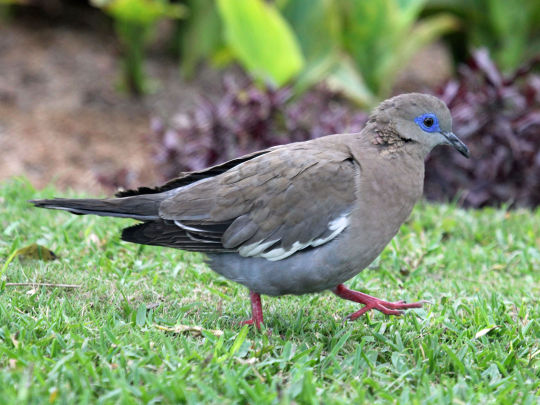
West Peruvian Dove, by DickDaniels, CC BY-SA 3.0
Zenaida is, for the most part, a genus that is non-endangered, apart from one species that is extinct in the wild. They are also closely related to the Passenger Pigeon, which is now extinct. Though they all live in the Americas, the range of each differs, with some overlap between certain species. They probably diverged from other doves sometime between 2 and 3 million years ago, originating mainly in North America and then spreading to South America following the formation of the land bridge between the two continents. Fossils of this genus are known from recent rocks from Florida, California, Arizona, New Mexico, Colorado, the Carribbean, and Ecuador.

Mourning Dove by Trisha M. Shears, in the Public Domain
The white-winged dove, Z. asiatica, lives in the southwestern region of the United States, down through Mexico and the Caribbean, and has expanded through Texas, Oklahoma, Louisiana, and Mississippi. It also, sadly, has been introduced to Florida. They are round doves, about 29 centimeters long, with brownish grey upper plumage and gray lower plumage. They also have patches of blue, featherless skin around each eye as adults. They have a cooing call, like other doves and pigeons, that goes hoo, hoo, hoo-hoo. They also call out hoo-a to warn for predators.
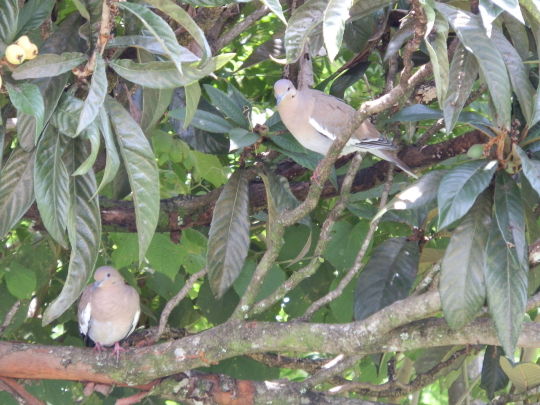
White-Winged Doves by Gabriel Gianello, CC BY-SA 3.0
The West Peruvian Dove, Z. meloda, lives primarily from Ecuador the Chile, mostly in subtropical and tropical environments, both dry and wet. They have a bright blue patch of skin around each eye, and have brown eyes, with both sexes fairly similar in coloration. They are probably not threatened, and they have a caw of hoo-hoo-WOO... hoo-hoo-WOO-hoo. The Zenaida Dove, Z. aurita, is also not endangered - they live in the Caribbean and Yucatán Peninsula, with some even reaching the Florida Keys. They are about 28 to 30 centimeters long, and are similar in appearance to Mourning Doves, but are smaller with shorter and rounder tails, and darker coloration. It will roost in trees, shrubs, and rock crevices and grassy vegetation. They also forage on the ground, and have similar calls to Mourning Doves, but have a faster pace.
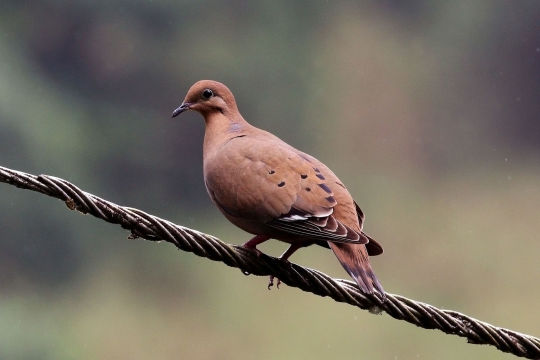
Zenaida Dove, by Charlesjsharp, CC BY-SA 4.0
The Galápagos Dove, Z. galapagoensis, is endemic to the Galápagos Island and is very common there. They are between 18 and 23 centimeters long and has streaked white and black wings. They are actually very reluctant to fly, and mostly eat seeds and fruit from the ground, living in rocky lowlands. They also pollinate cacti, due to an absence of bees. They build their nests on the ground, carrying two eggs in each nest.

Galápagos Dove, by The Rambling Man, CC BY-SA 3.0
The Eared Dove, Z. auriculata, is a dove from Colombia, Argentina, and Chile. It is partially migratory as well, moving due to food supply changes. It is 24 cm long, with blue-black coloration on its ear feathers, giving the bird it’s name. They have a soft call, oo-ah-oo, and they’re common in savannah and other sorts of open habitats. It has fast and high flight, with mating flights that have steep aerial climbs. They nest in trees, laying two eggs in each nest.

Eared Dove, by Alex Proimos, CC BY 2.0
The Socorro Dove, Z. graysoni, is a species that is extinct in the wild, but still present in captivity, with reintroduction programs being prepared at various zoos. It is closely related to mourning doves and can hybridize with other members of the species. It is about 26.5 to 34 cm long, with stronger but similar colors to the mourning dove. It has a disyllabic coo, followed by three single calls, and then another disyllabic calls, all taking less than 3 second to go together. It lives only in mated pairs or solitarily, unlike other doves of this genus, and the young are chased away from the nest immediately upon being able to care for themselves. They lived in low seasonably humid forests, and upon the introduction of cats, these habitats became more dangerous for them, as they lived in the lowland, eating fruit from the local fruit trees that also have become less common. Feral cats, human hunting, and competition with other animals reduced their population until they went extinct in the wild. Reintroduction efforts have begun, reducing sheep populations, controlling cats, and breeding programs are in place.
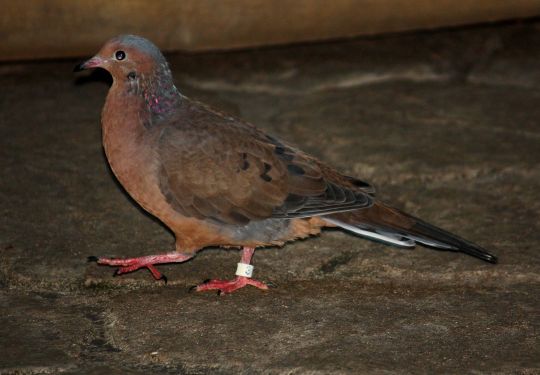
The Socorro Dove, by Ltshears, CC BY-SA 3.0
The Mourning Dove, Z. macroura, is arguably the most famous species, and the reason why this is one of my favorite genera of birds. It is abundant, widespread, and not endangered, with year-round range in most of the US and Mexico, with winter only ranges in the southern portion of Central America, and the summer only range in southern Canada. It is most closely related to the eared dove and the Socorro dove, but these are thought to be separate species from one another. It has five subspecies, which have overlapping ranges, and all appear fairly similar to one another. It is a slender dove, about 31 cm long, with broad wings and a round head, with a long and tapered tale. They’re usually light, gray-brown and pinkish below, with black spotting on the wings. The males also have purple-pink patches on the sides of the neck.

Mourning Dove, CC BY-SA 2.5
They live in a wide variety of habitats including urban areas, farms, prairies, grasslands, and woods. It lives well alongside humans and migrate over land, during the day and at low altitudes, but not all Mourning Doves mate. There are even some Canadian doves that stay in the winter, feeding off of Bird Feeders. They have a very distinctive call, a sort of Coo-OOO-cooo, coo, coo, which you can hear here: https://commons.wikimedia.org/w/index.php?title=File%3AMourning_Dove.ogg. This call is why they’re so fond to me. They also can have a nest call that’s shorter to attract mates, a soft ork for greeting when re-meeting mates, and a short alarm call.

Mourning Dove pair, by Andrew Atzert, CC BY 2.0
The male initiates courtship with a noisy flight, then a circular glide to land, before approaching the female with a puffed out breast and a bobbing head. The pair will preen each other’s feathers, and then they’ll find potential nest sites, with the female dove building the nest. They construct nests out of twigs, conifer needles, and glass blades, so they’re never very strong nests. They’re usually made in trees, and they usually lay only two eggs. The young hatch after two weeks and are altricial, meaning that they are helpless and require the aid of their parents. They fledge - so become more mature, but not quite able to fly - in about 11 to 15 days, and stay nearby the nest for two weeks after to be fed by the father. The dove is monogamous, forming strong pair bonds, which reconvene in the same area after the breeding season.

By Snowmanradio, CC BY-SA 2.0
They feed almost exclusively seeds, though occasionally they eat snails or insects. They swallow grit to aid with digestion and forage on the ground, and they often eat at bird feeders. They enjoy pine nuts, sweetgum seeds, and pokeberry, amaranth, canary grass, corn, sesame, and wheat seeds. THey have many different diseases such as tapeworms, nematodes, mice, and lice, including Trichomonas gallinae, with can cause growths in the mouth and esophagus. They’re usually hunted by falcons, and hawks, with corvids, grackles, cats, and snakes preying on their eggs. They drink by suction, and often sunbathe and rainbathe, stretching their wings while lying on the ground. They also enjoy dustbathing and waterbathing in pools and bird baths. They roost in trees when not breeding, and they rest their heads between the shoulders close to the body while sleeping. There are about 475 million mourning doves in the world today.
Sources:
Johnson, K. P., D. H. Clayton. 2000. A molecular phylogeny of the dove genus Zenaida: Mitochondrial and Nuclear DNA Sequences. The Condor 102: 864 - 870.
https://paleobiodb.org/navigator/
https://en.wikipedia.org/wiki/Zenaida_doves
https://en.wikipedia.org/wiki/West_Peruvian_dove
https://en.wikipedia.org/wiki/White-winged_dove
https://en.wikipedia.org/wiki/Zenaida_dove
https://en.wikipedia.org/wiki/Eared_dove
https://en.wikipedia.org/wiki/Gal%C3%A1pagos_dove
https://en.wikipedia.org/wiki/Socorro_dove
https://en.wikipedia.org/wiki/Mourning_dove
Shout out goes to @komatiiteseal!
#dove#dinosaur#bird#zenaida#columbid#birblr#palaeoblr#komatiiteseal#zenaida asiatica#zenaida meloda#zenaida aurita#zenaida galapagoensis#zenaida auriculata#zenaida macroura#zenaida graysoni#dinosaurs#biology#a dinosaur a day#a-dinosaur-a-day#dinosaur of the day#dinosaur-of-the-day#science#nature#factfile#Dìneasar#דינוזאור#डायनासोर#ديناصور#ডাইনোসর#risaeðla
138 notes
·
View notes